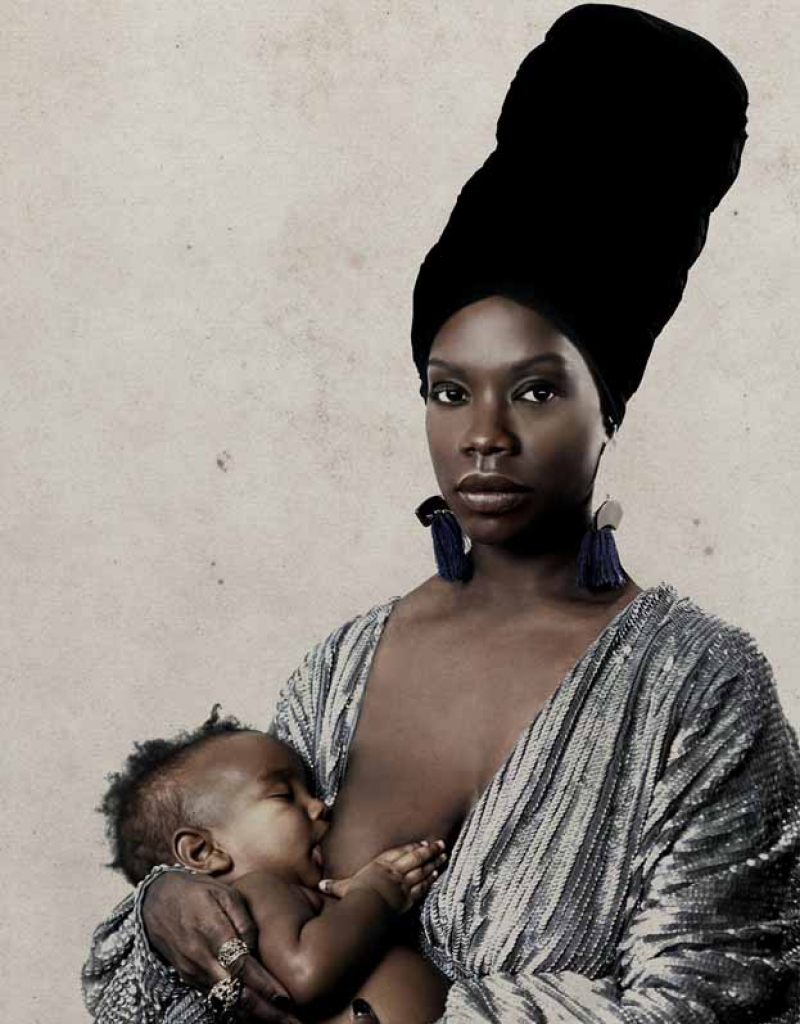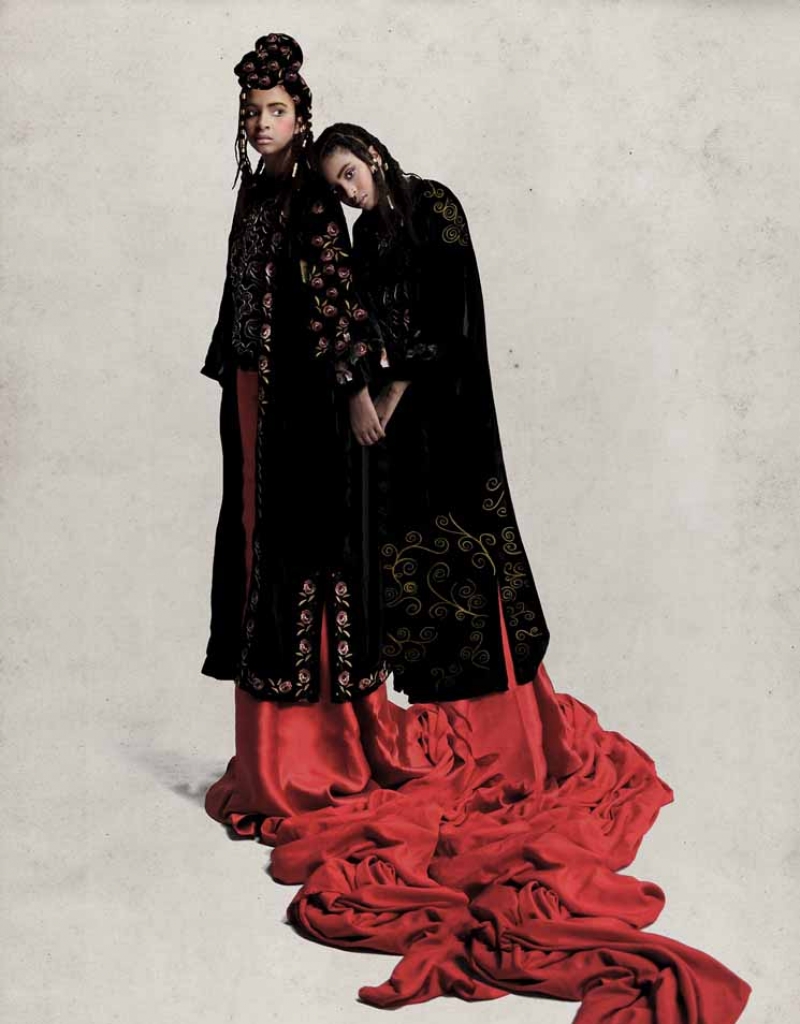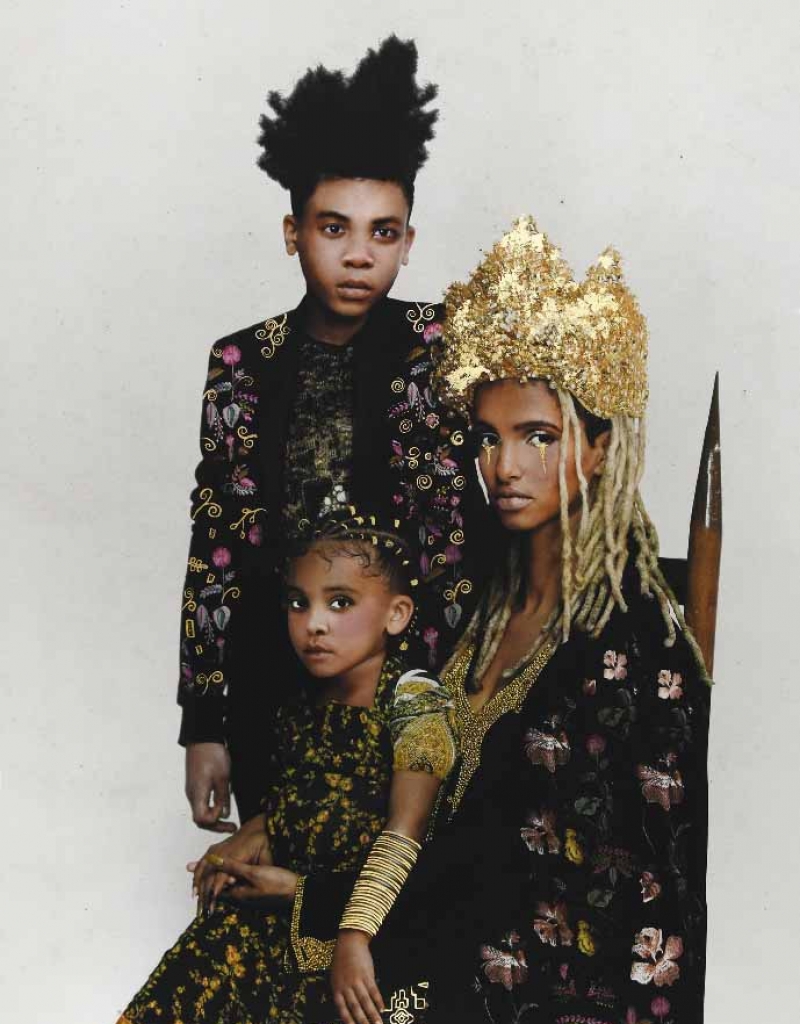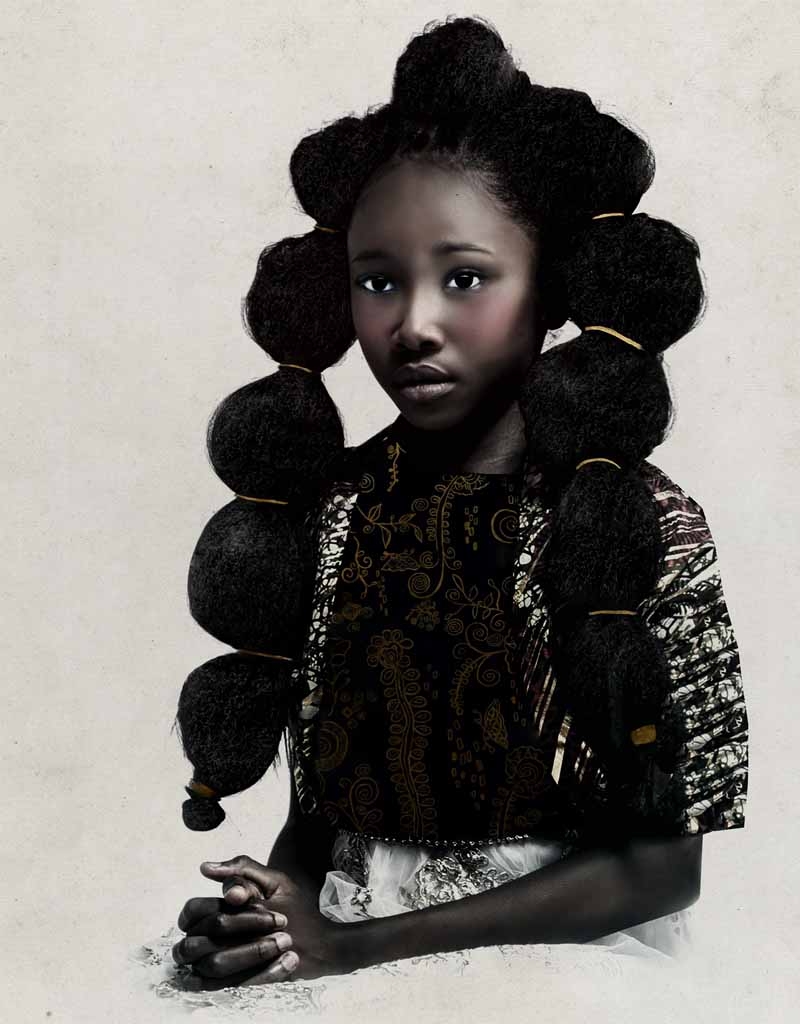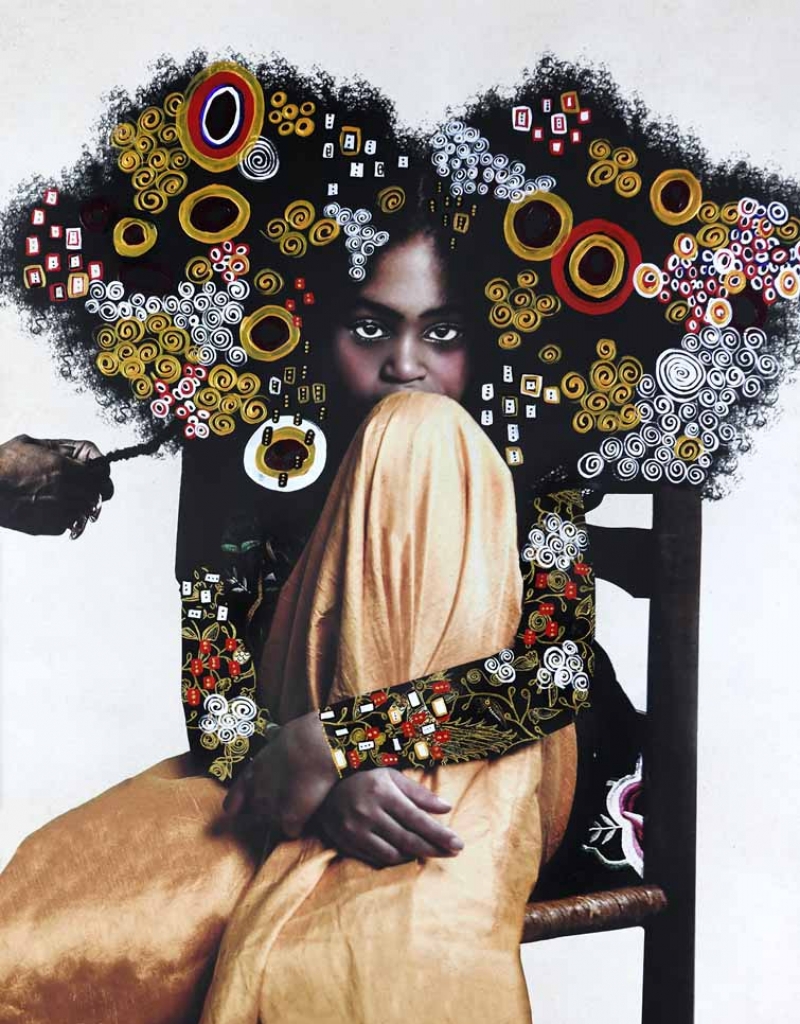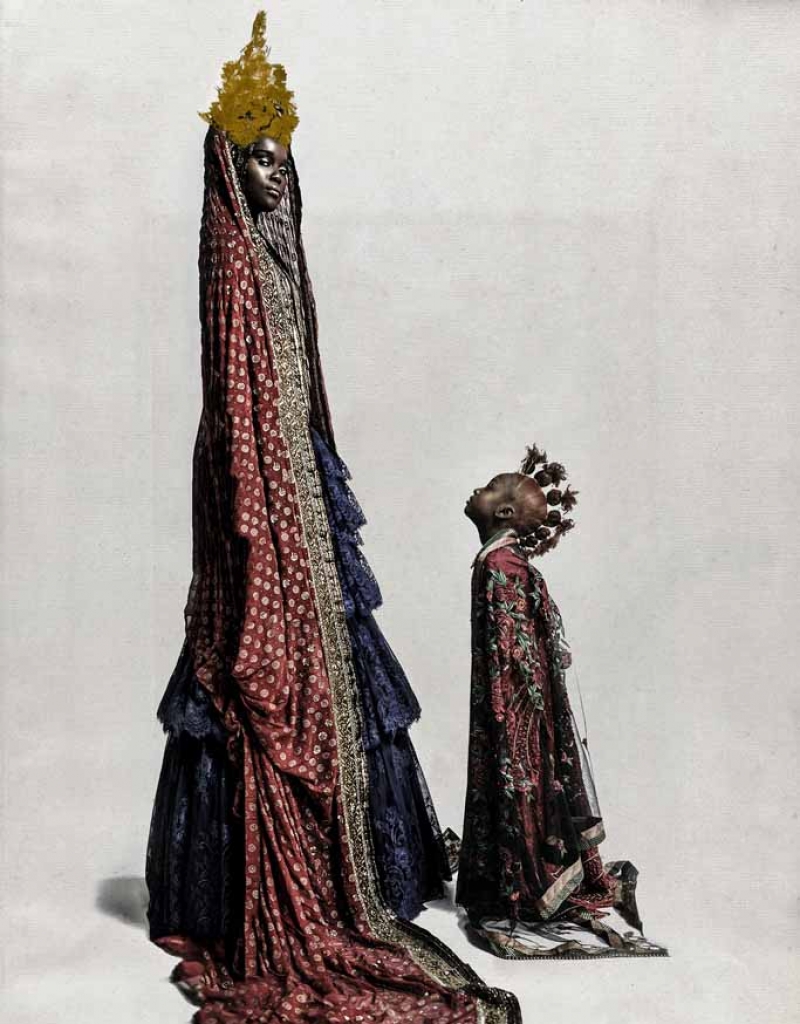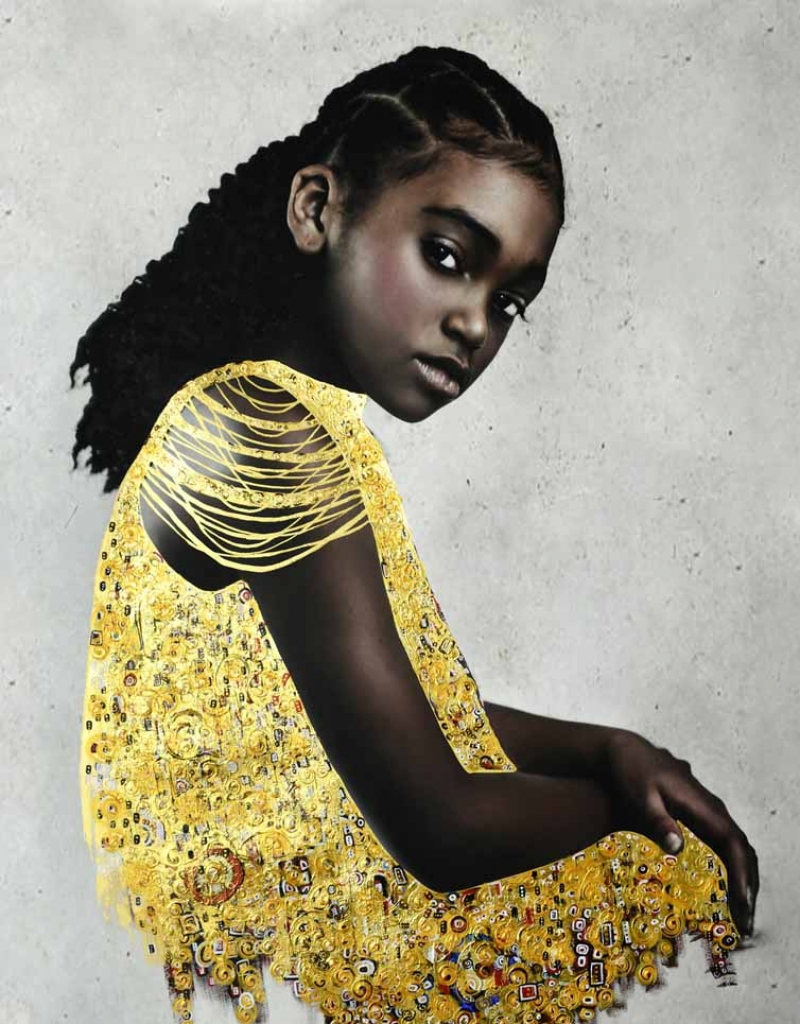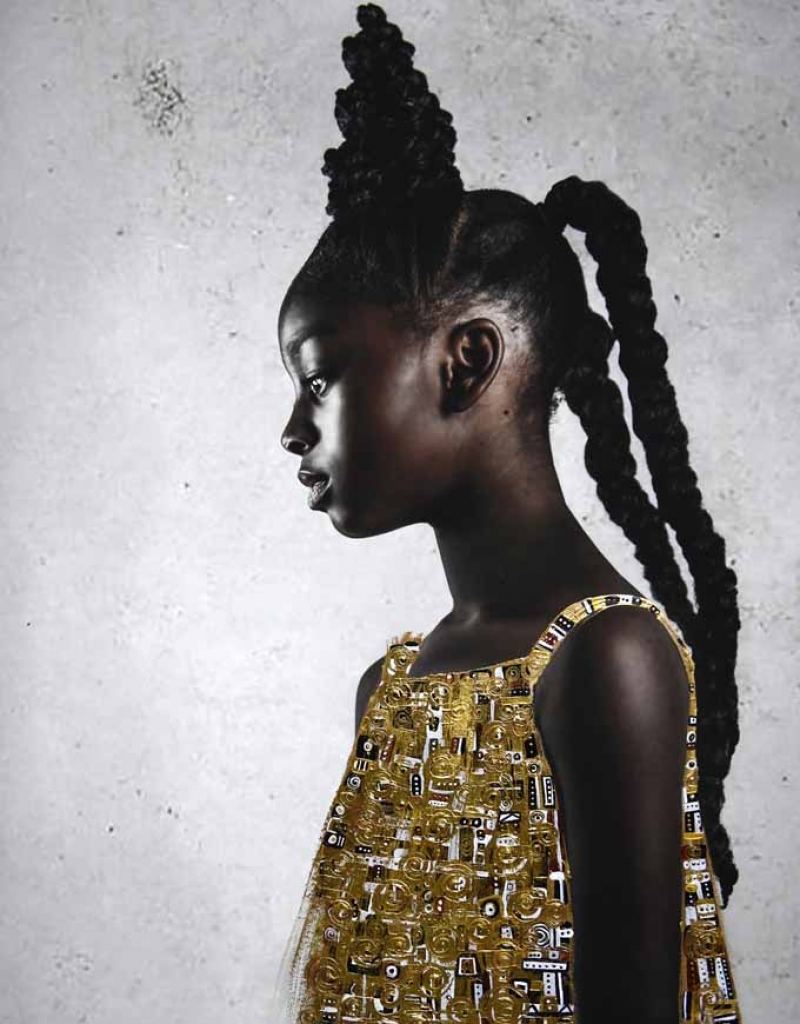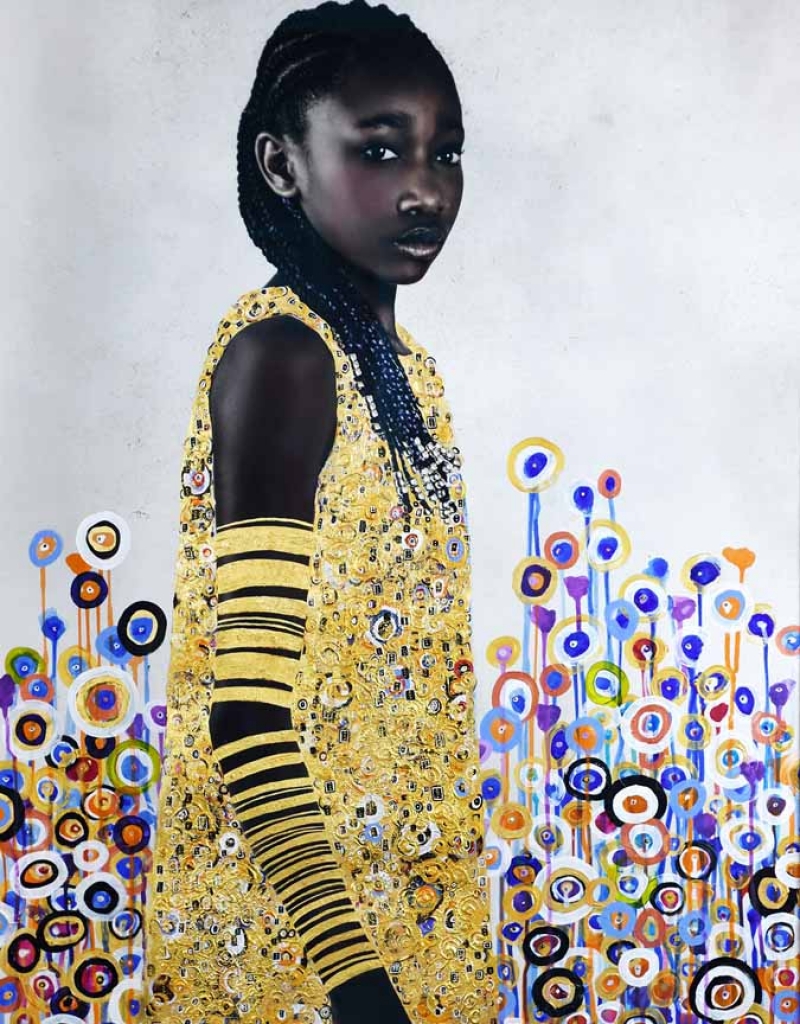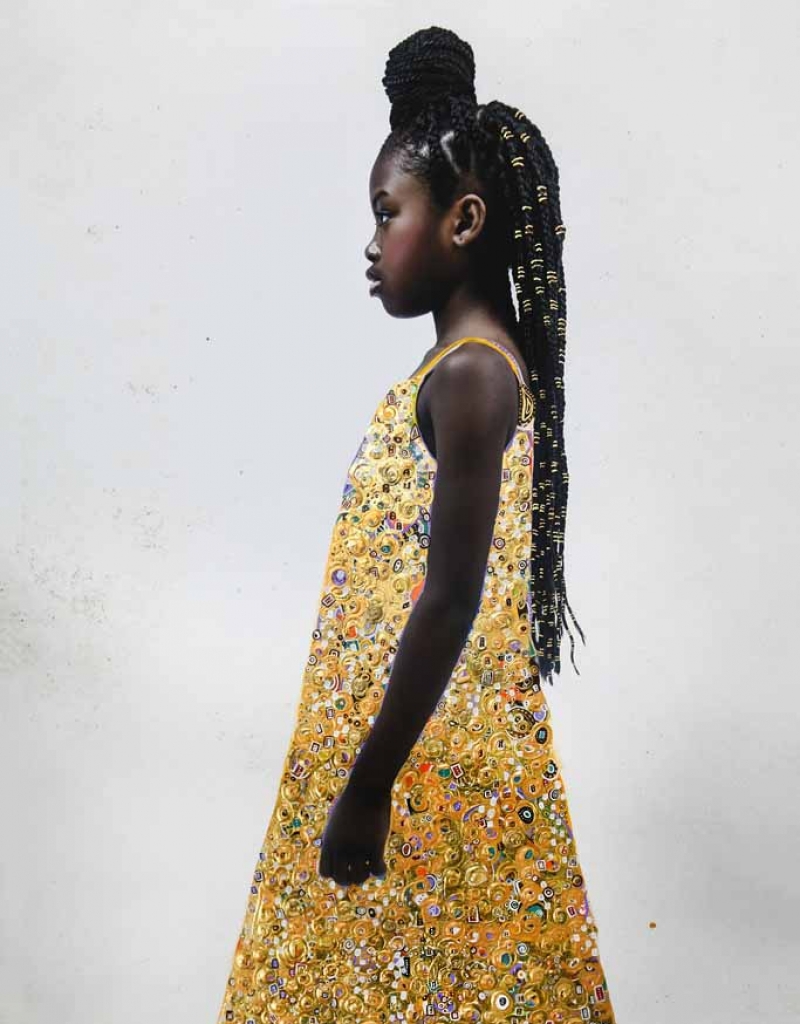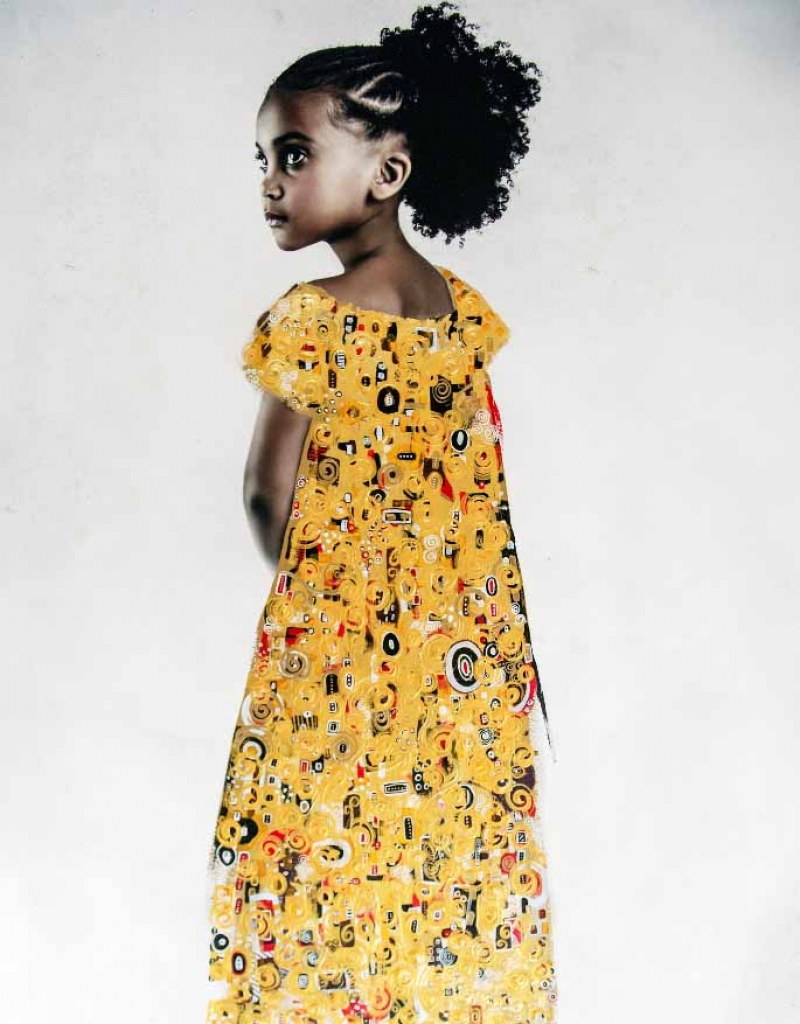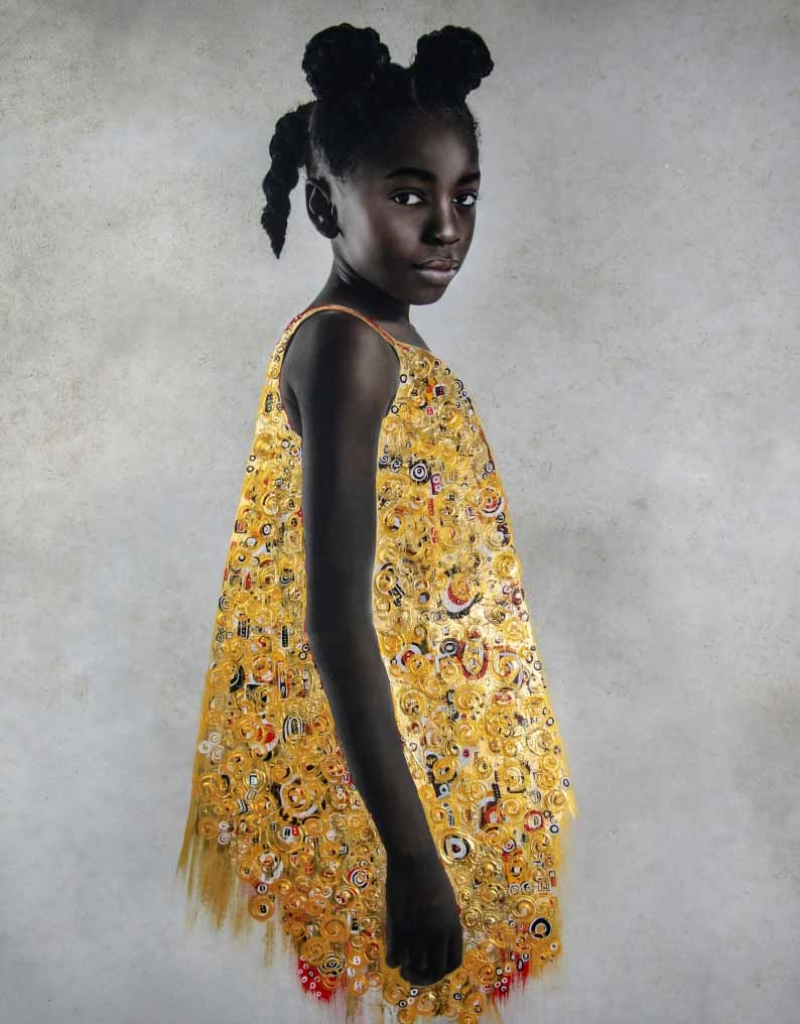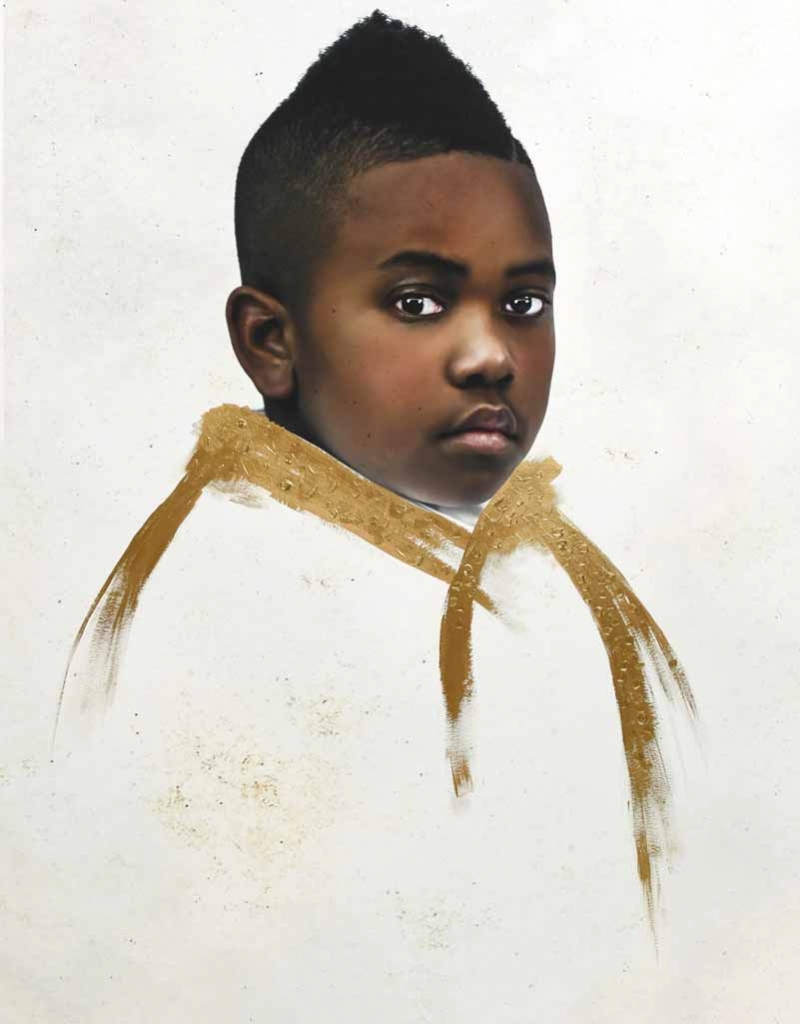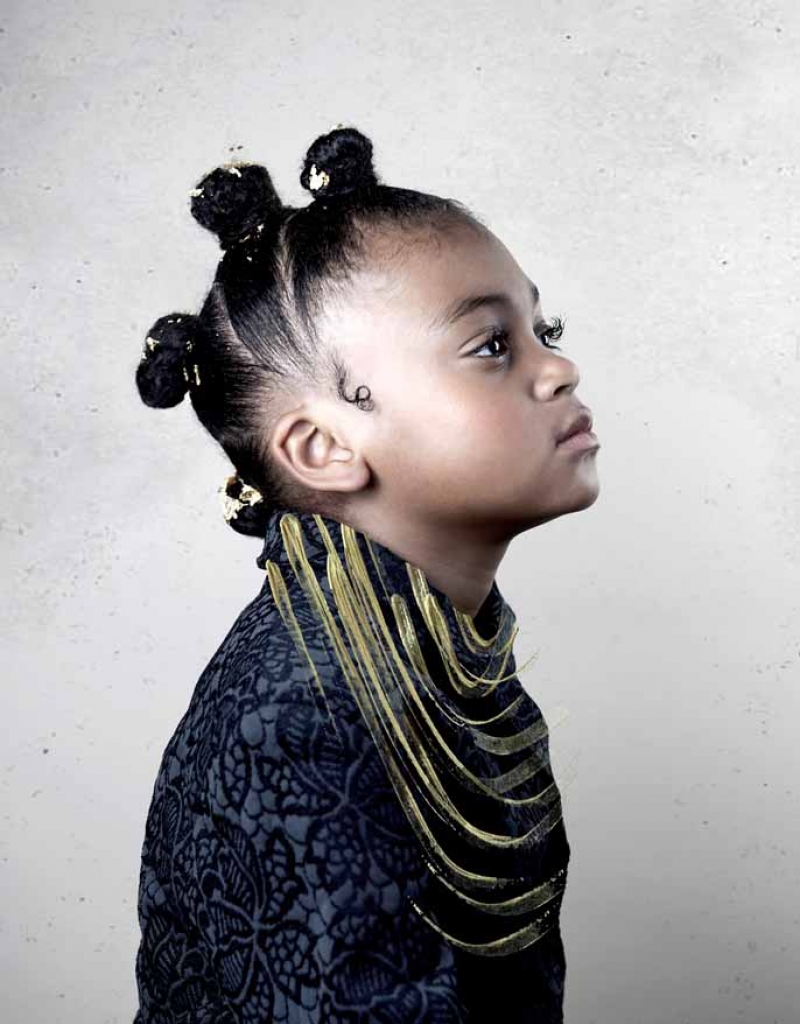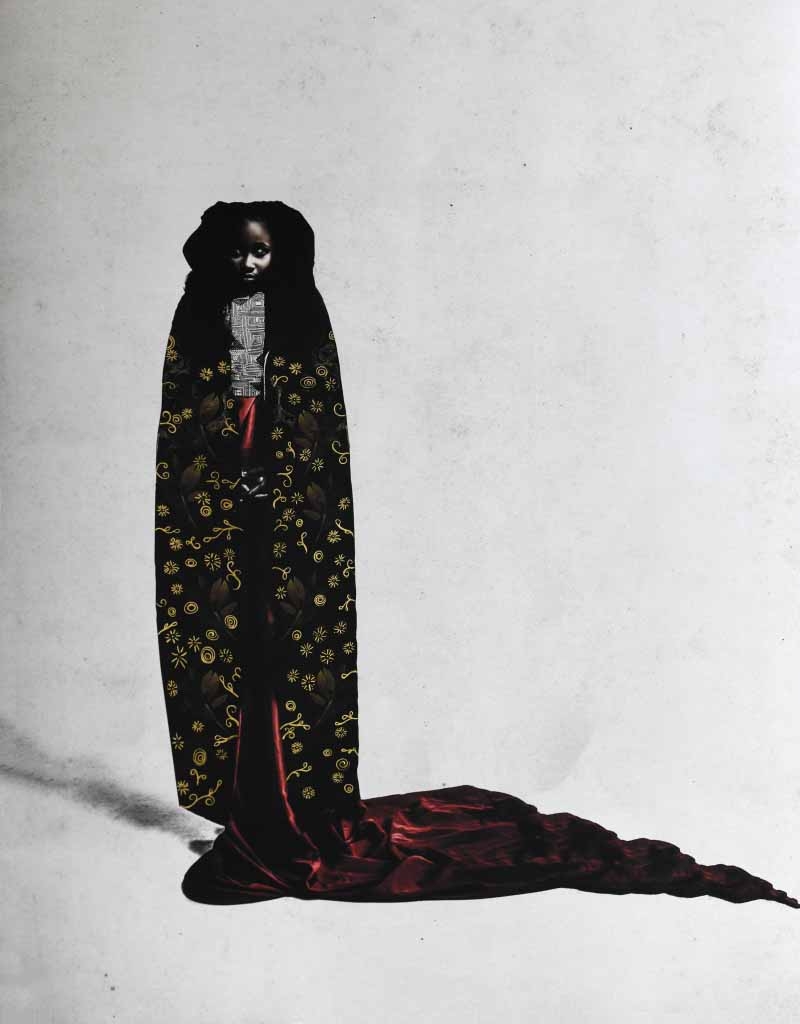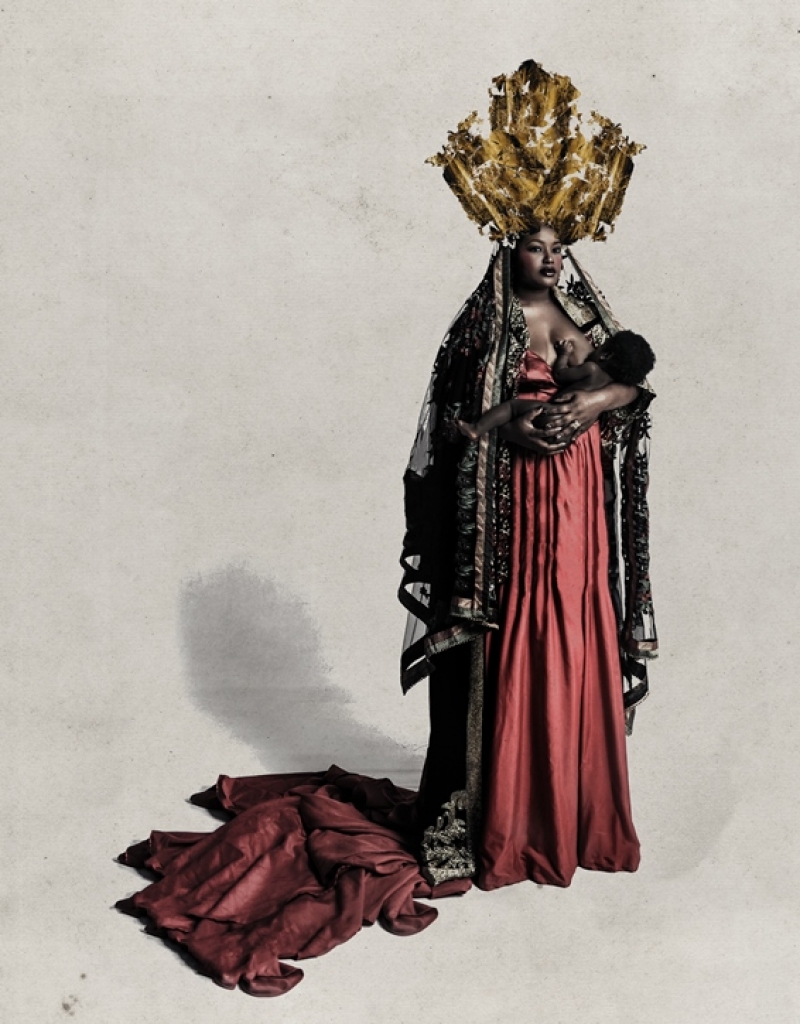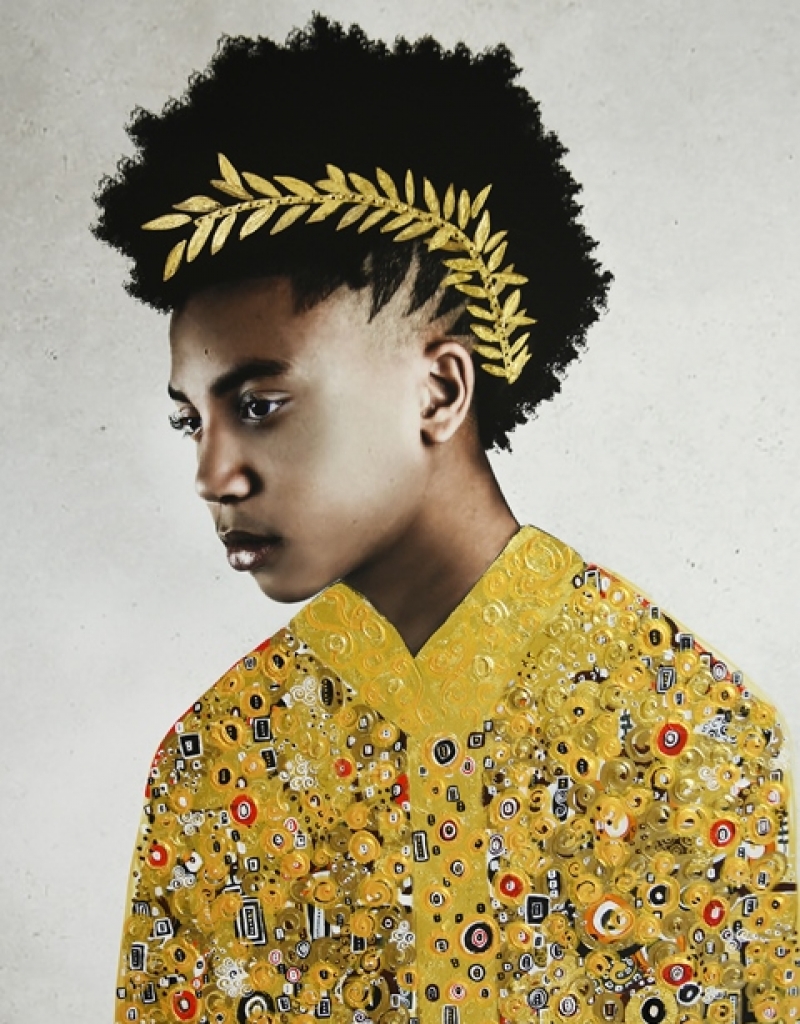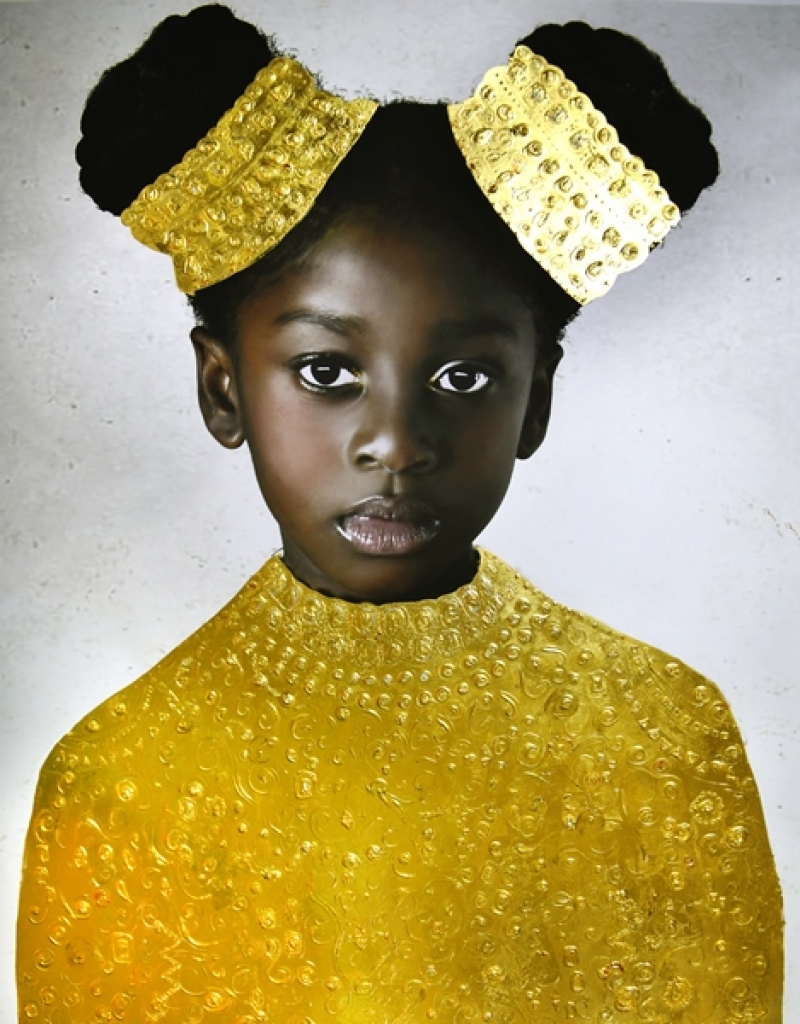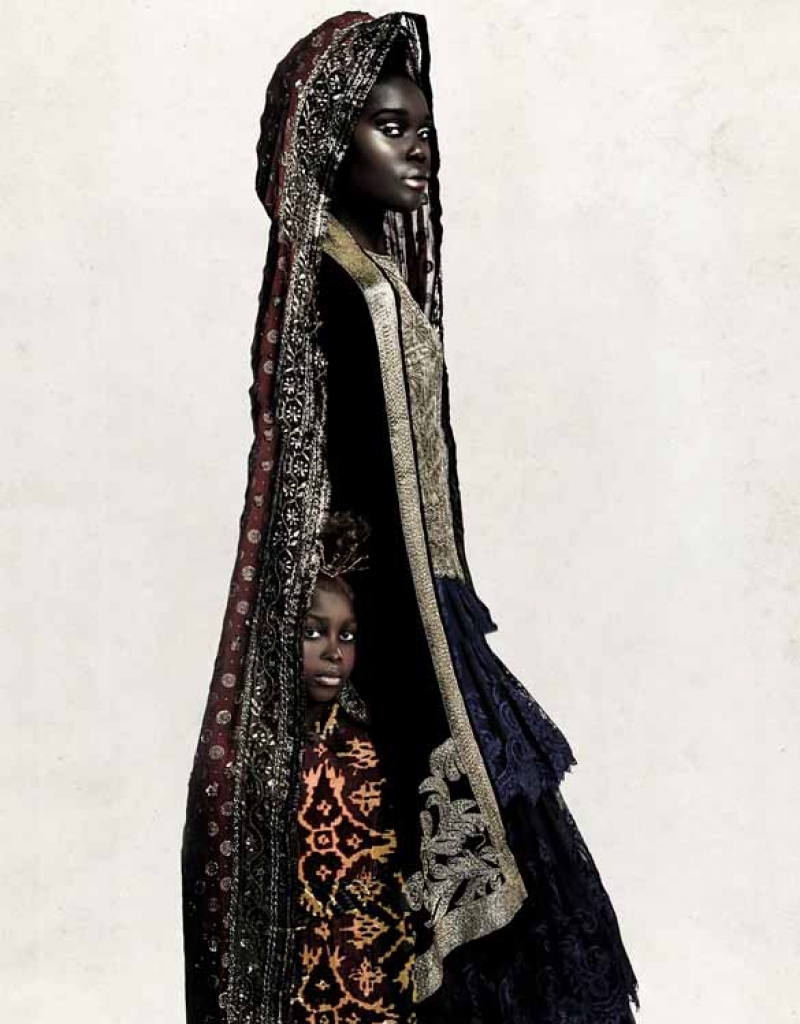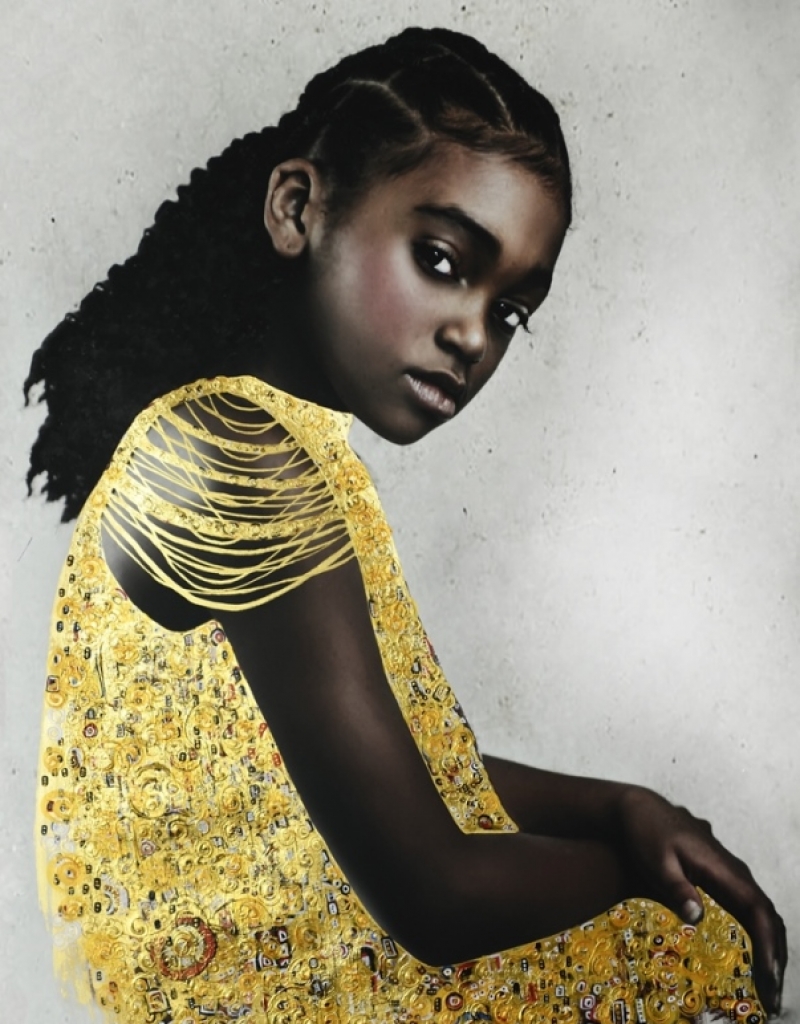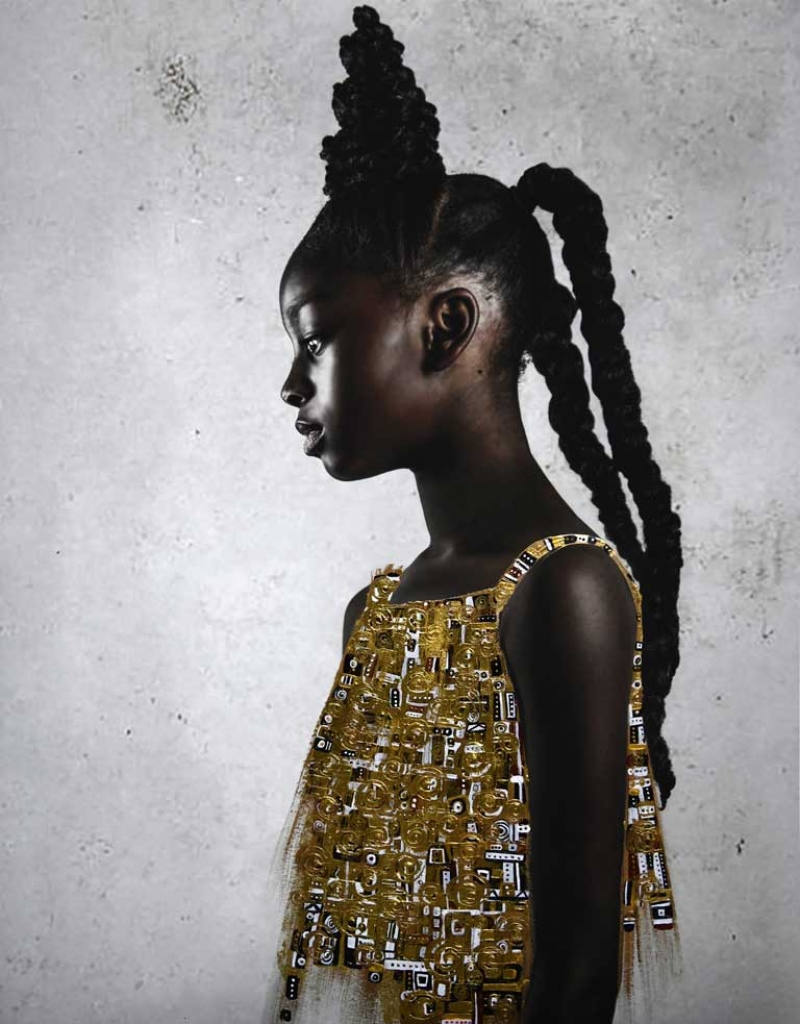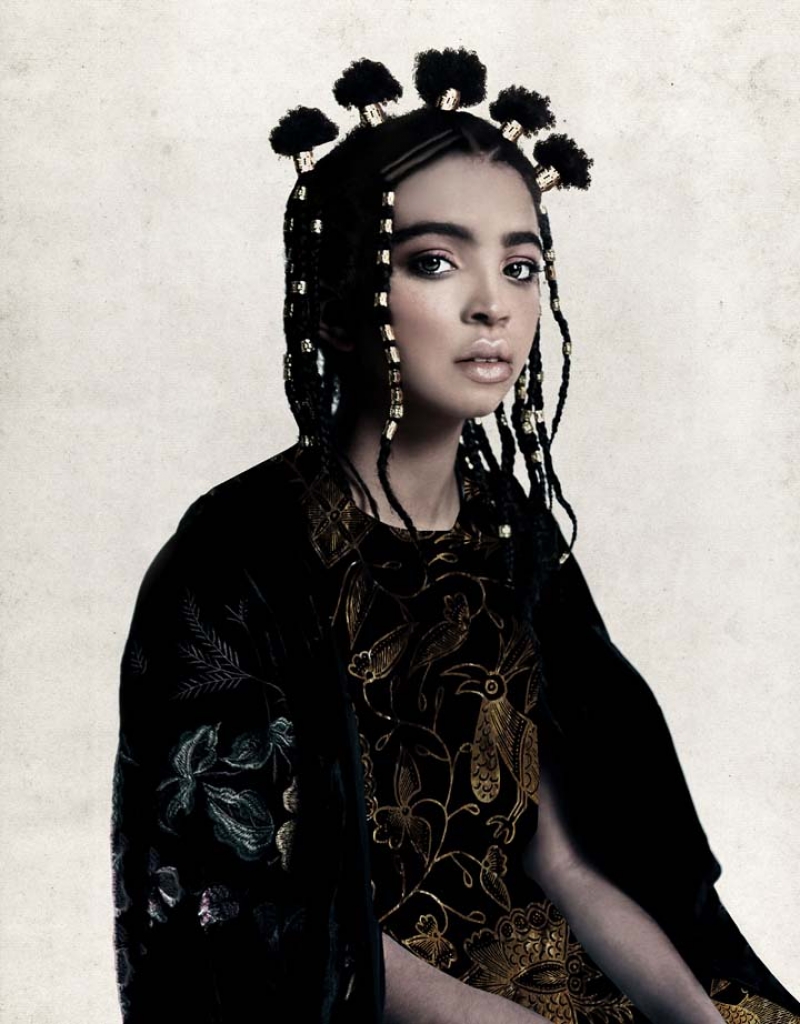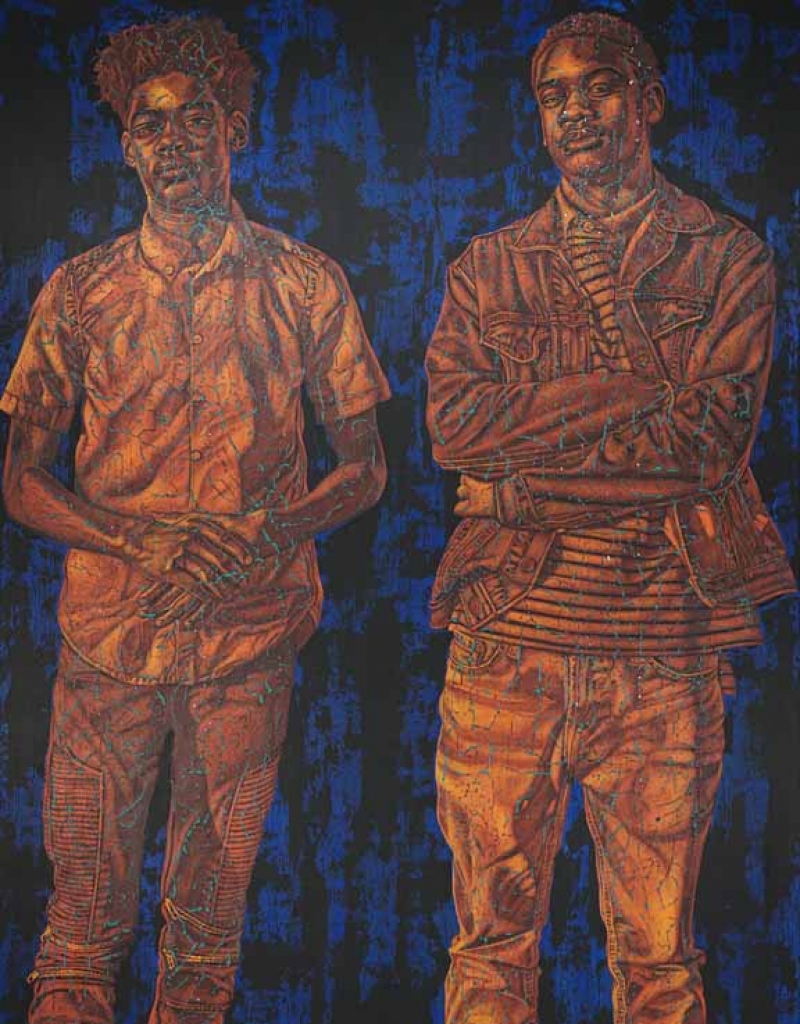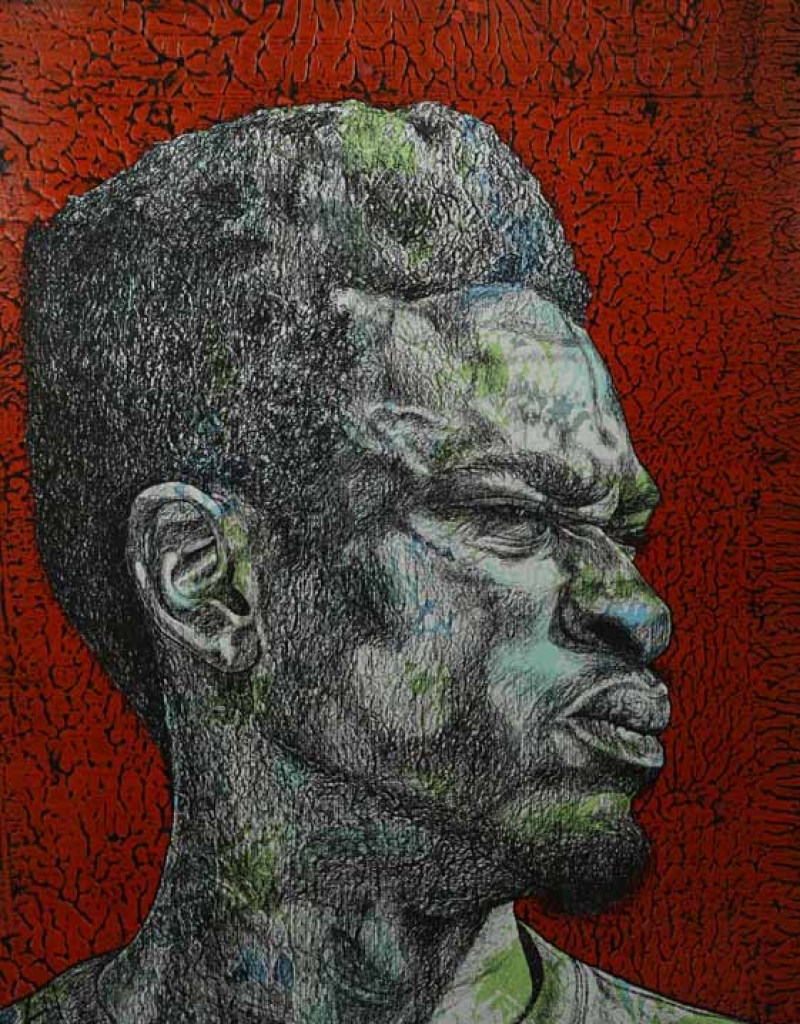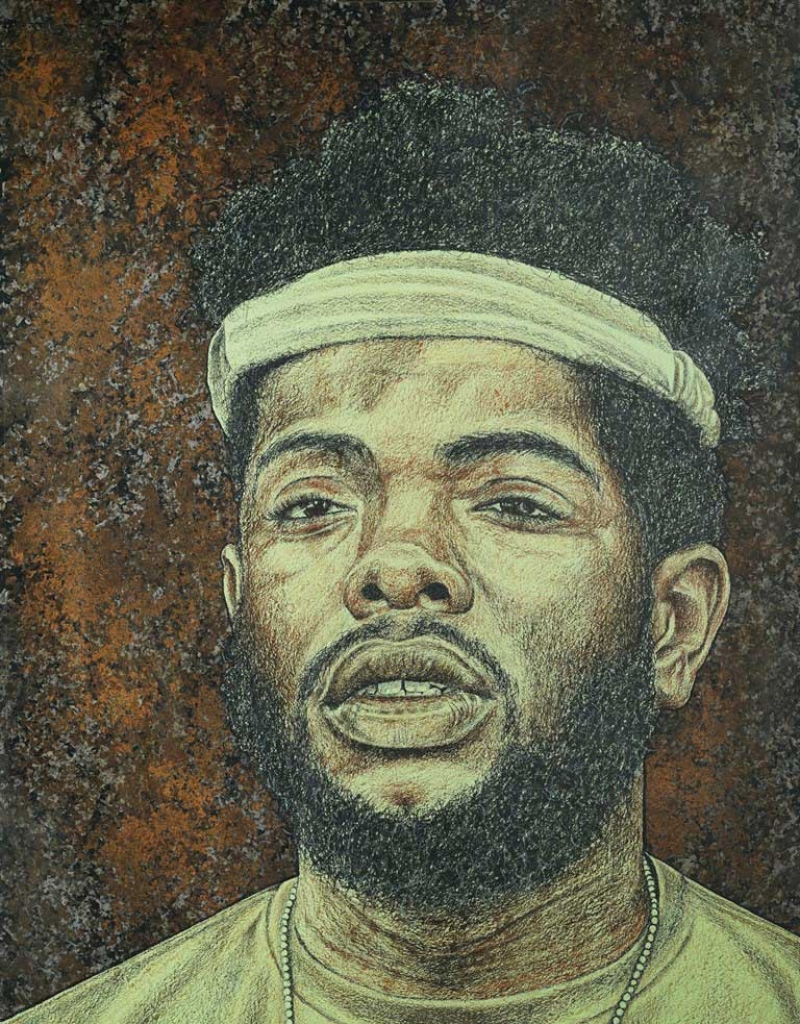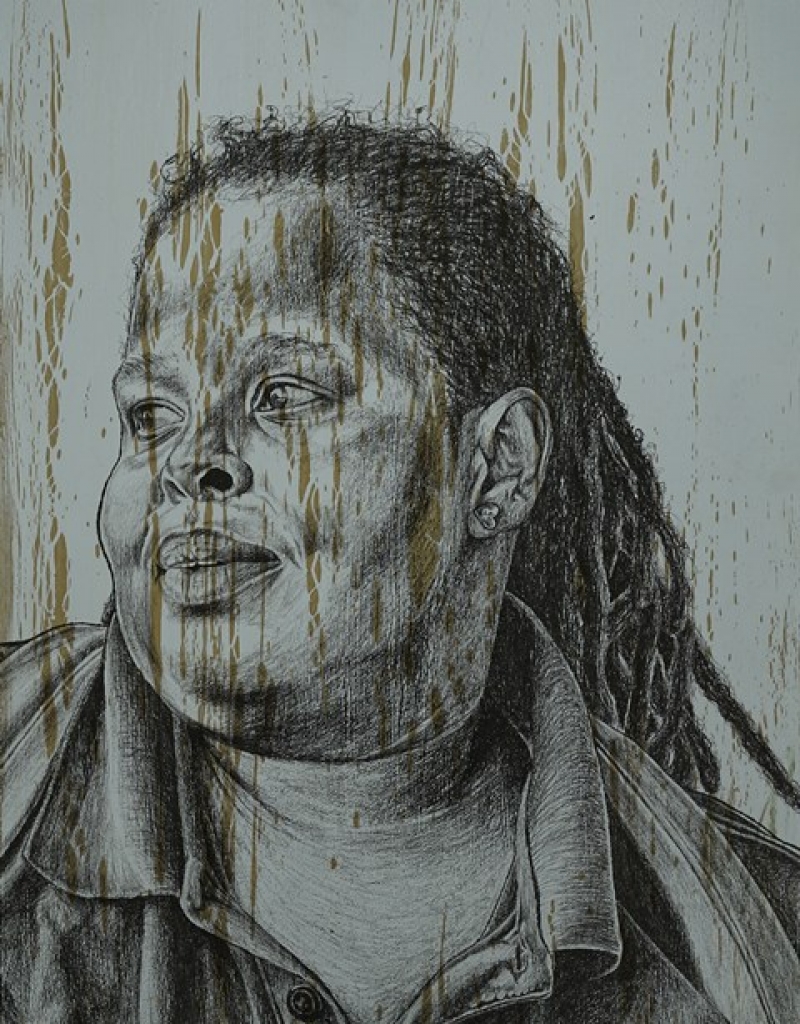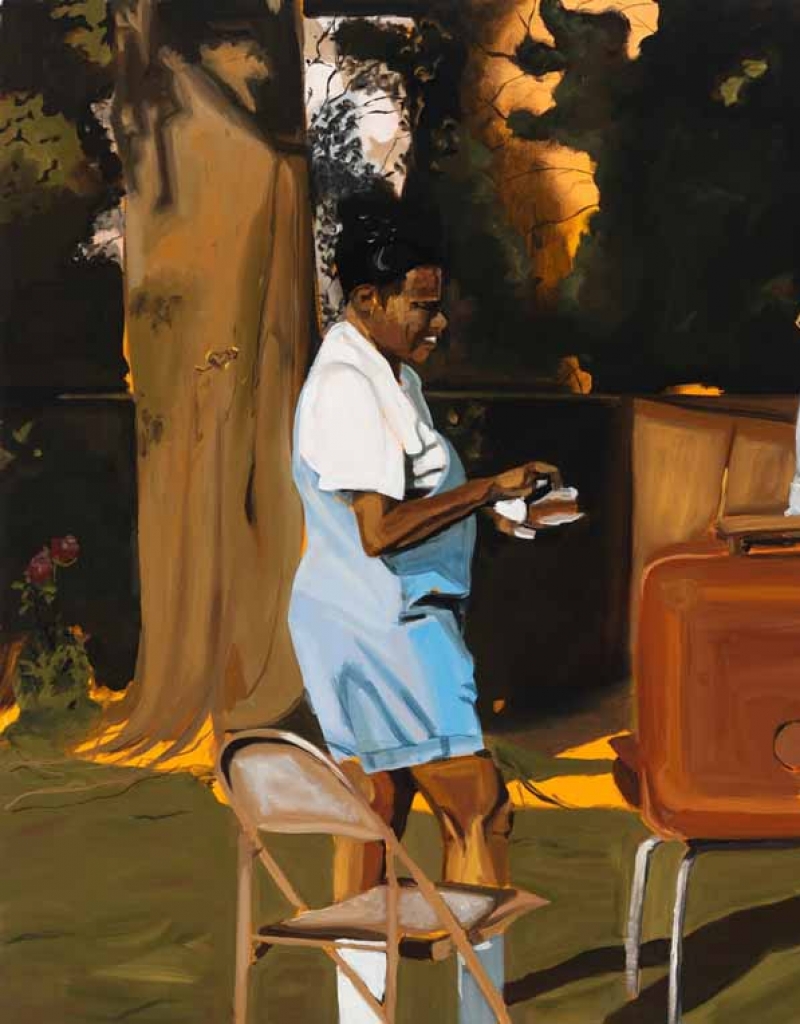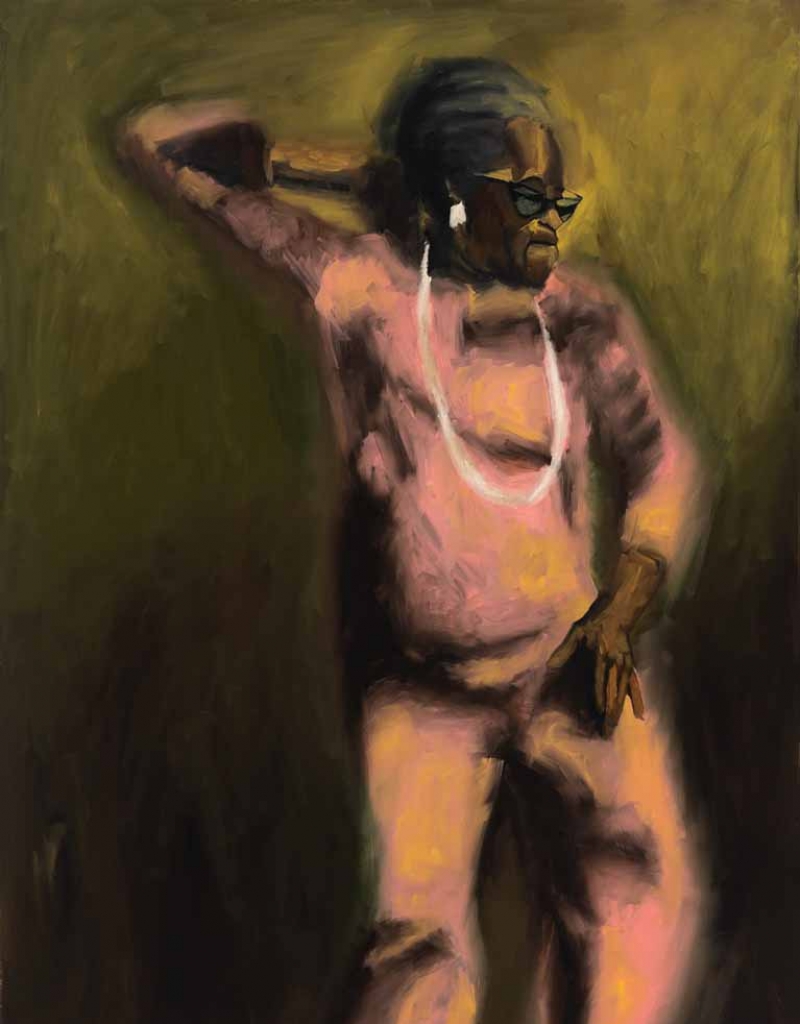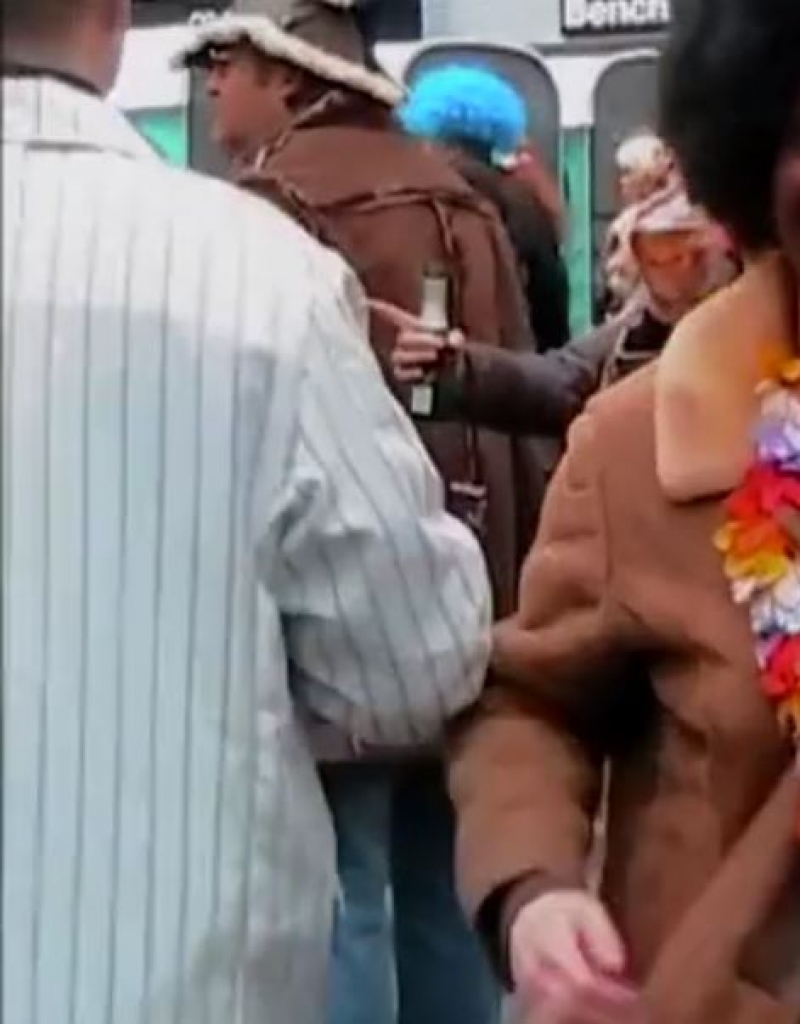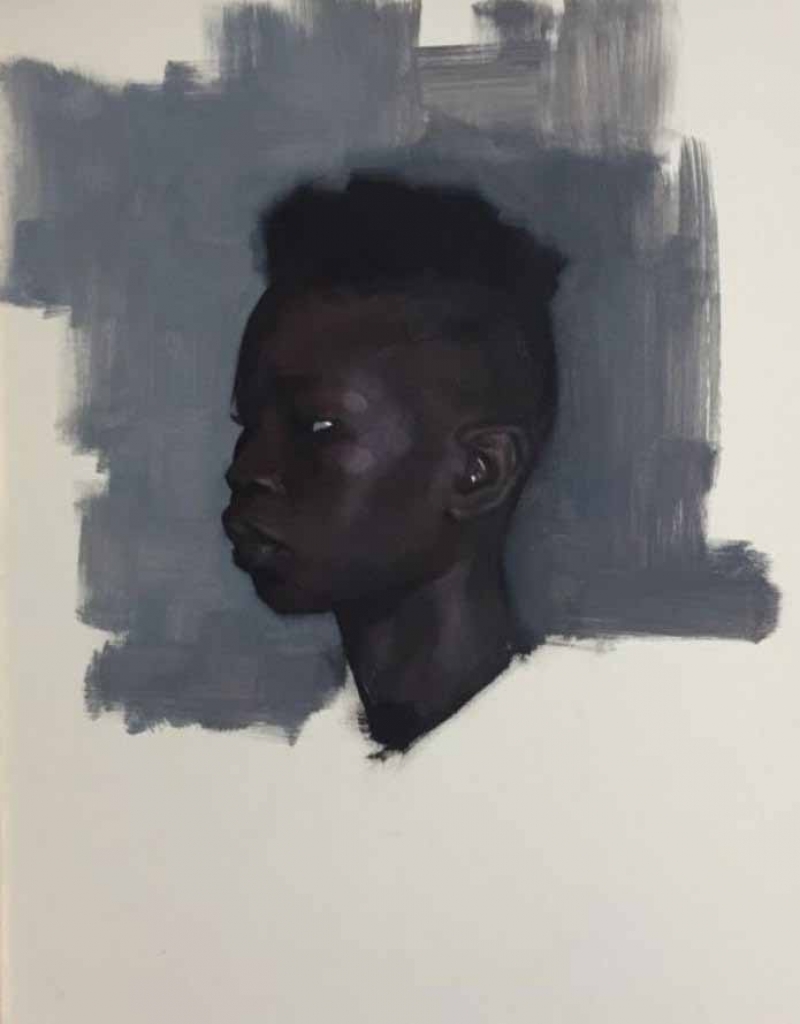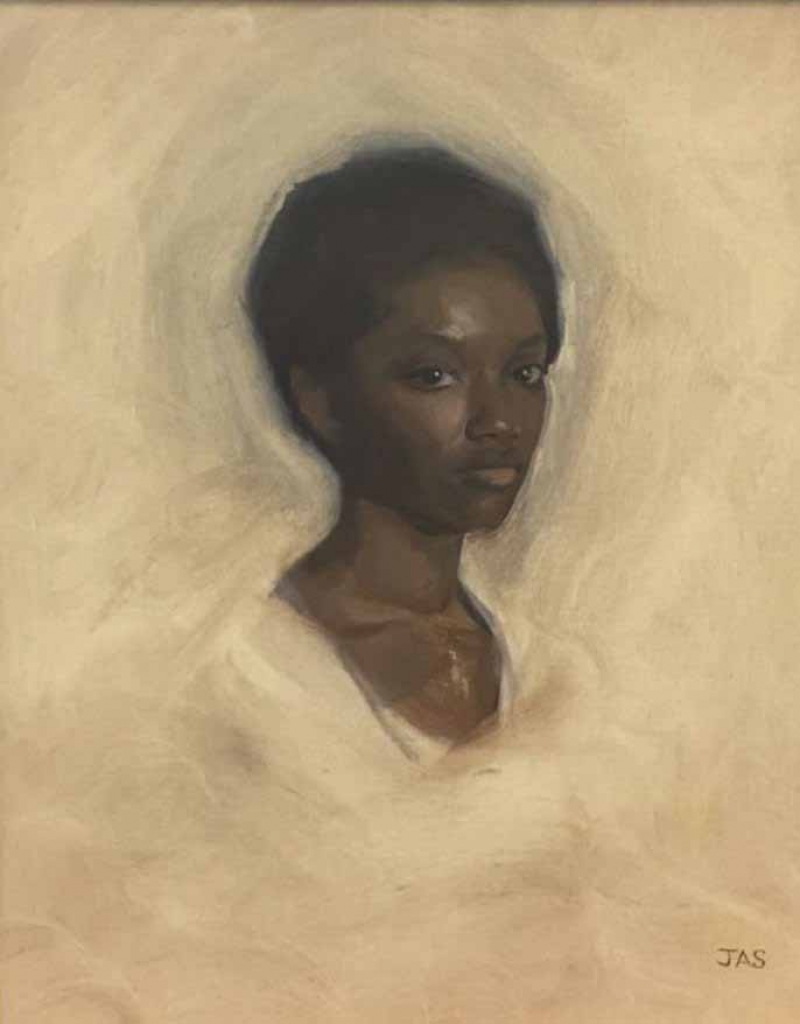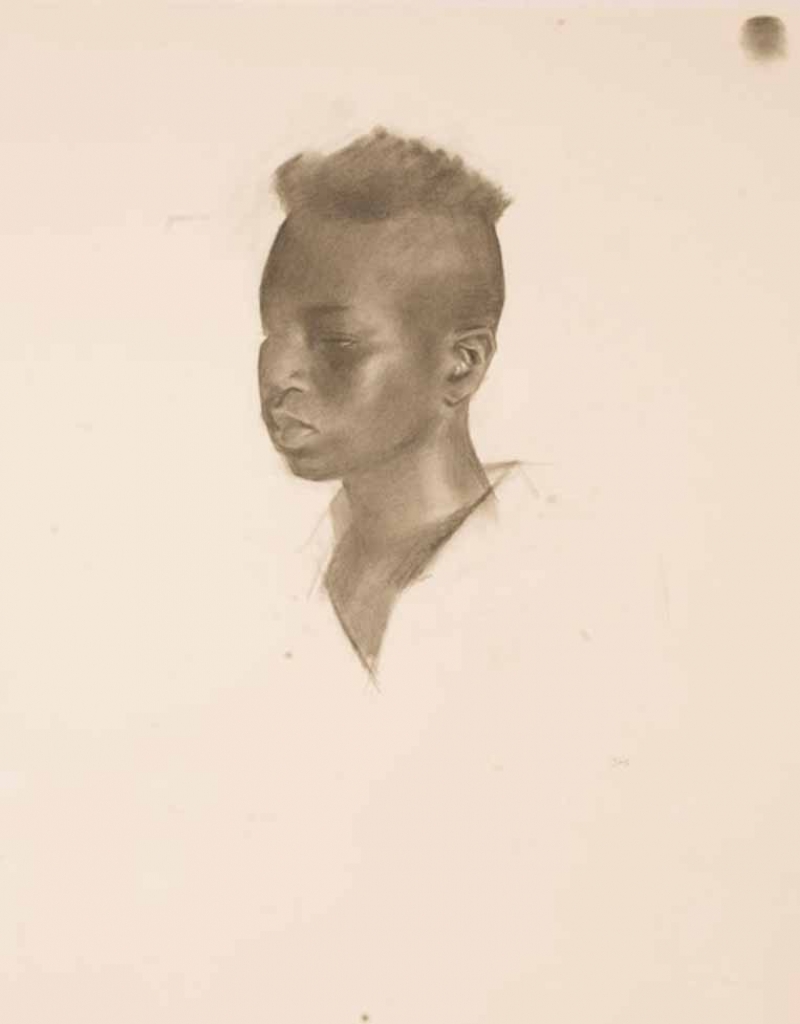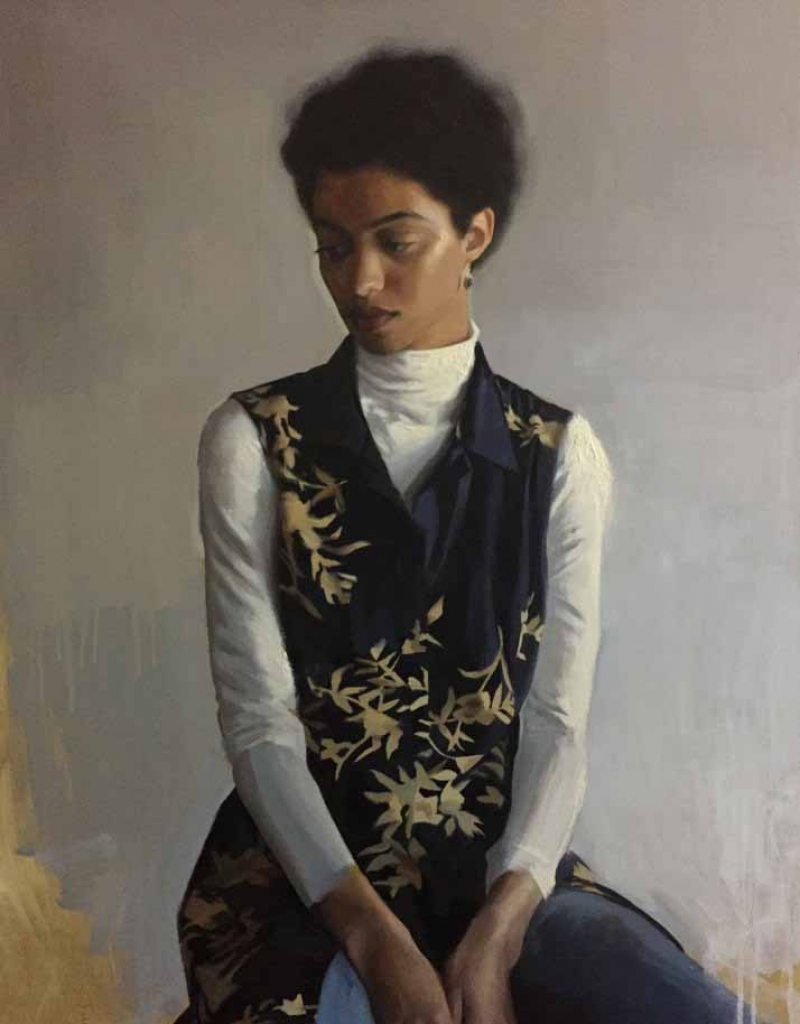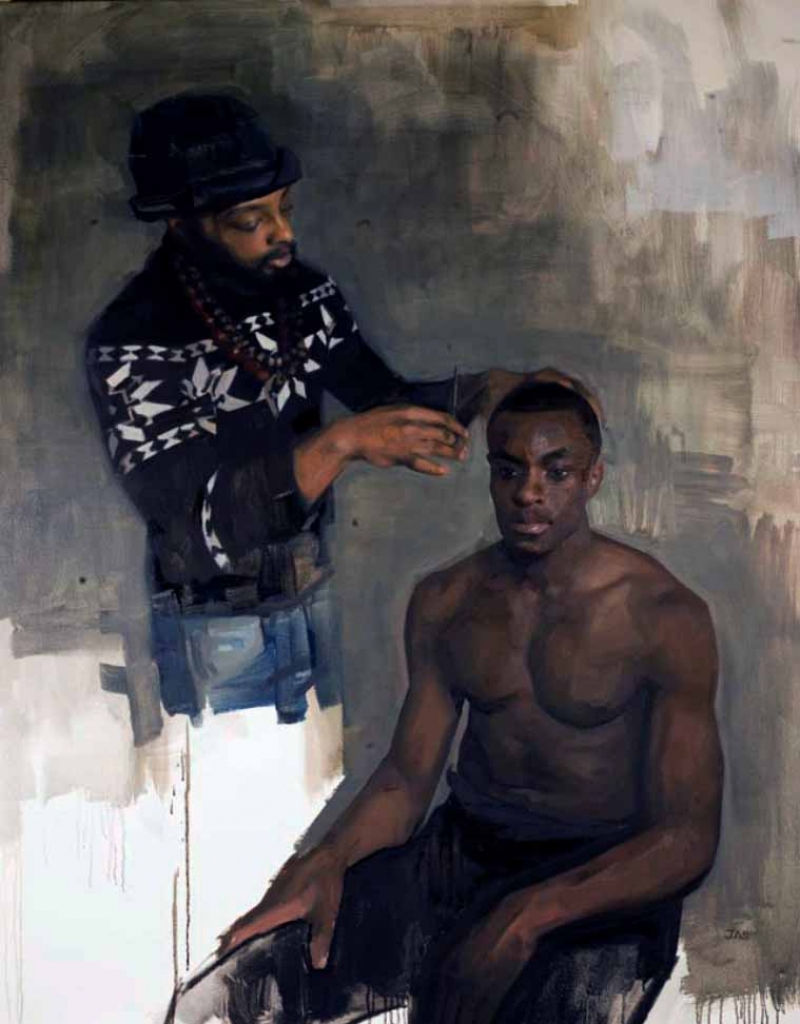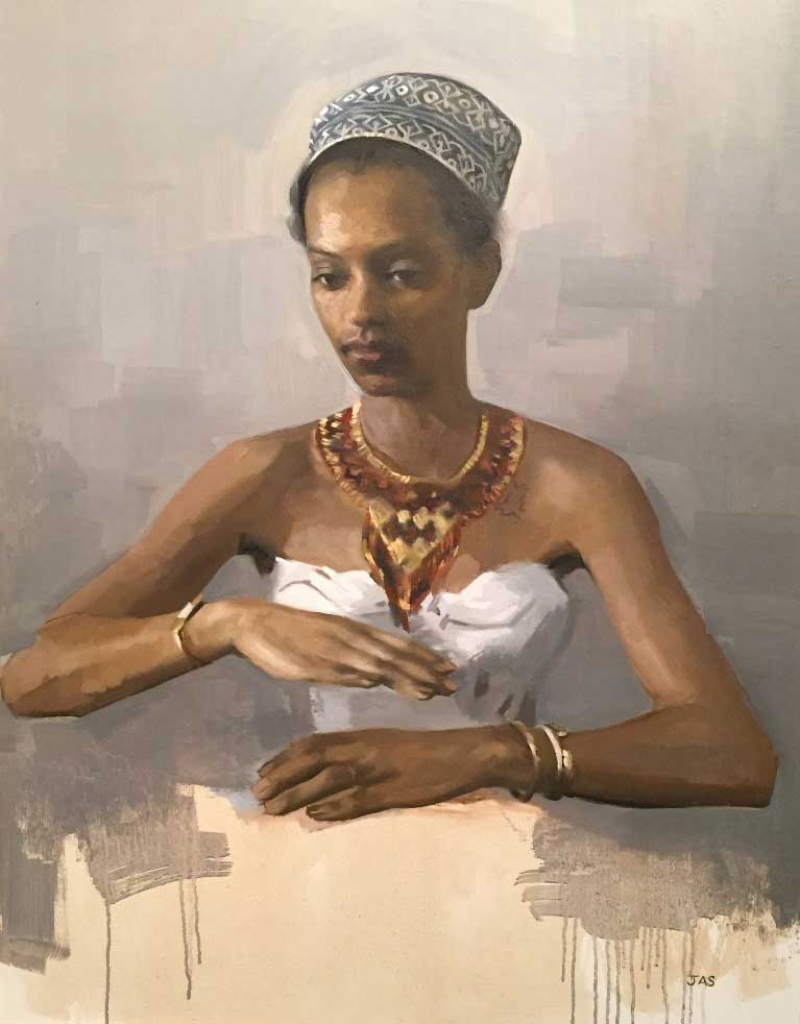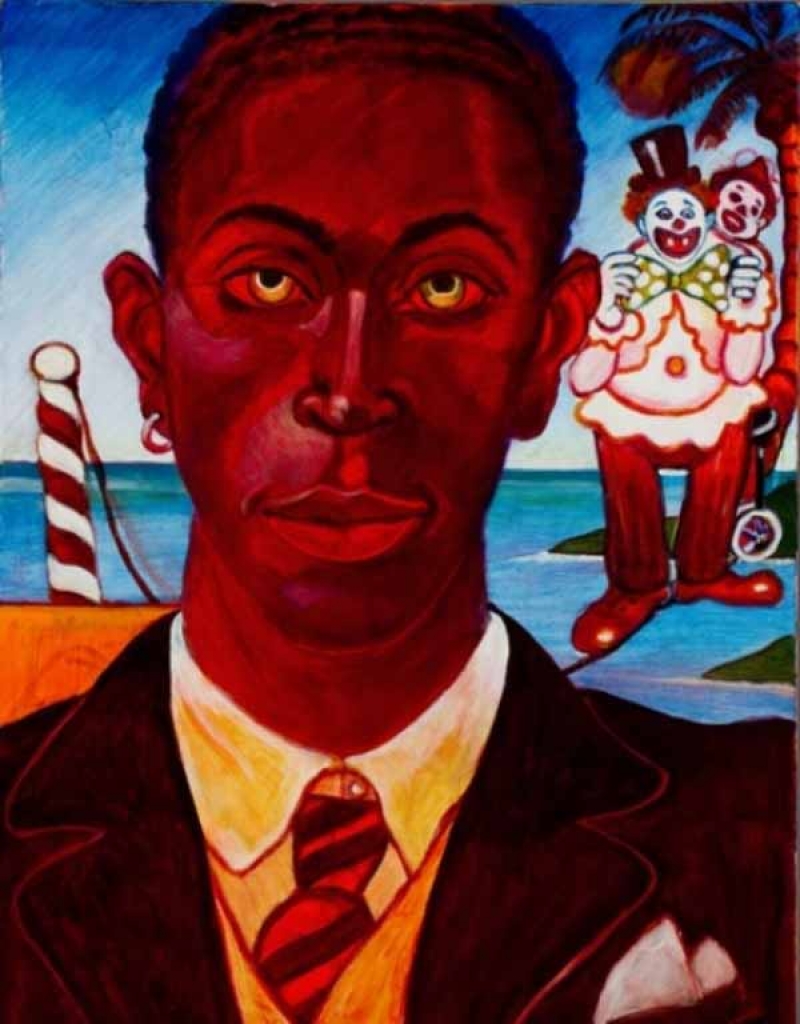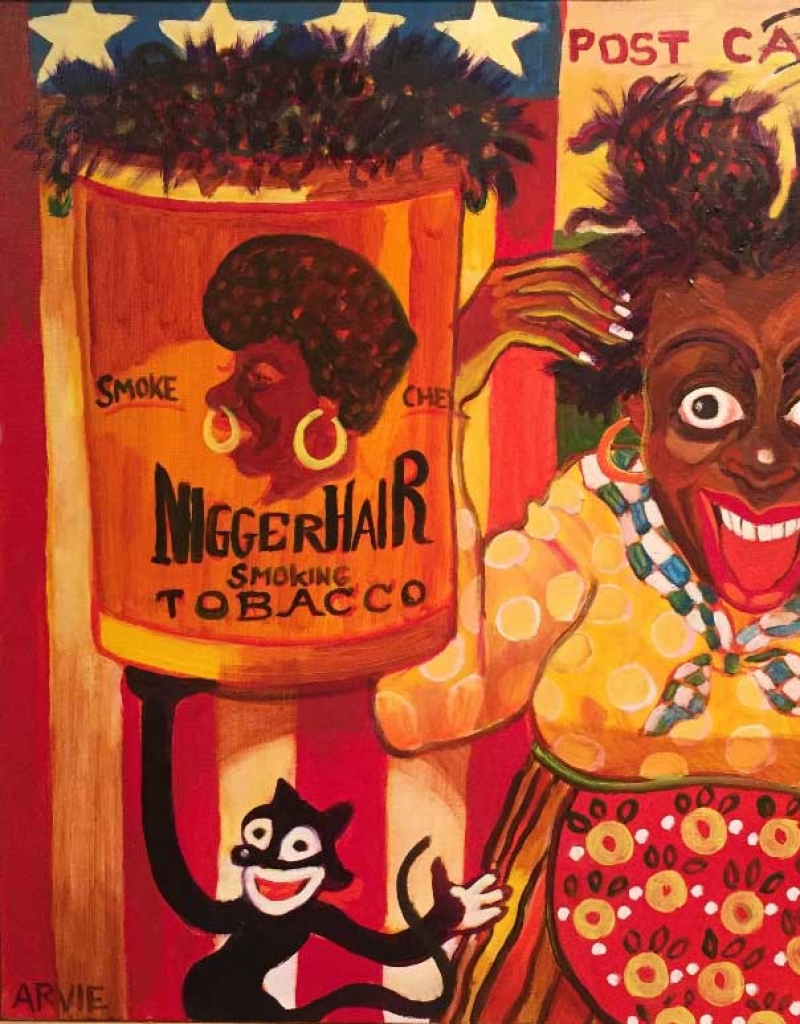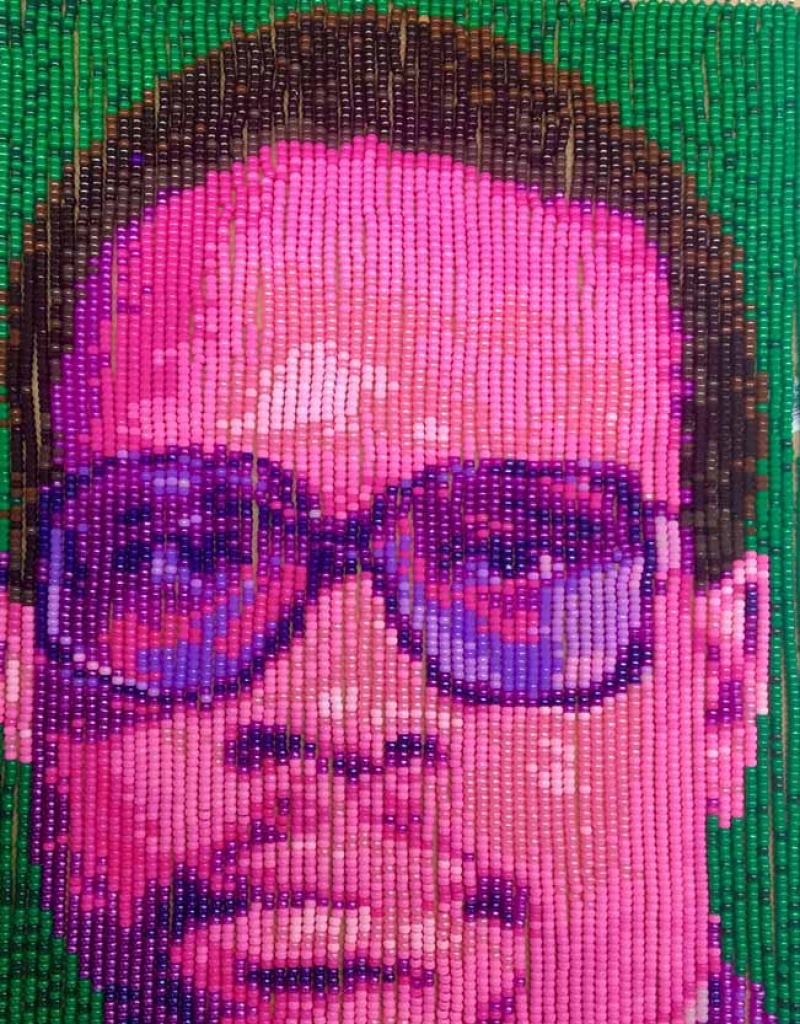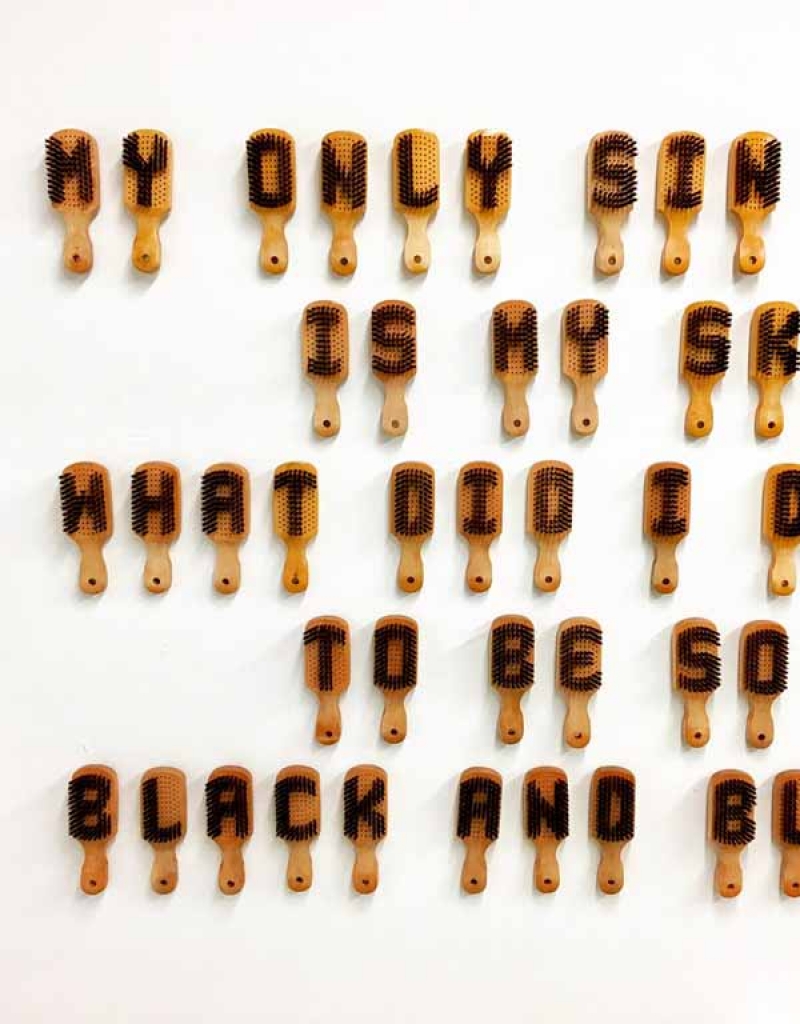Tawny Chatmon
Inheritance
”Our children inherit what we don’t resolve” anonymous
Inheritance, by Tawny Chatmon (American, b. 1979), invites the viewer to look beyond the decorated and nuanced portraits to examine issues of race and the historical positioning of African American portraiture in the absence of subjugation of the “black body” in Western art.
Chatmon, a mother of three black children, draws from her life experiences and belief that children inherit our memories, beliefs, traditions, and the world that we leave behind. Through her photographs, she conveys a message to her children, and to all black children, that they are precious, valued, and loved.
While the camera is her primary tool of communication, Chatmon takes a multi-layered approach in producing her photographs—her process does not subscribe to conventional photography. The photographs are often manipulated and hand-embellished with acrylic paint and 24-karat gold leaf, inspired by Gustav Klimt’s (1862-1918) “Golden Phase.” The use of gold and ornamentation in Klimt’s work evokes feelings of grace, magnificence, and beauty within Chatmon and has remained in the artist’s consciousness. These are the emotions Chatmon seeks to convey to those viewing her photographs. Her portraits are staged vignettes with models, who at times are her own children, wearing elegant garments. Chatmon experiments with various art practices and does not restrict herself to follow any set of rules, allowing her to create instinctually and fluidly. The result is a beautiful and powerful iconography that speaks to “the disparities that continue to affect black people around the world.”
This exhibition presents three bodies of work: The Awakening, Byzantine Contempo, and The Redemption. In these series, Chatmon celebrates the beauty of black childhood, African American culture, and the delicate intricacies of protecting and raising a black child in today’s world. Each series is a conversation on love, nurturing, and the familial bond; a commentary on the politics of blackness; the historical portrayal of the black body; and an investigation of Renaissance and Byzantine portraiture. In combating the negative stereotyping associated with natural hairstyles and adornments that are distinctively likened to black people and culture, Chatmon glorifies various styles: afros, locs, twists, and barbershop cuts revered in black communities. Embedded within the works are messages of embracing one’s beauty and cultural pride.
Text by Myrtis Bedolla. Edited by Grace Noh and Amanda Hajjar.
Inheritance is organized by Fotografiska, in collaboration with the artist and Galerie Myrtis.
PRESS
 FastCompany, February 2020
FastCompany, February 2020
Fotografiska New York is a photo museum for the Instagram era (video features Tawny Chatmon at 2:10)
Fotografiska New York is now open in the historic Church Missions House in Manhattan. The photo museum for the modern world emphasizes experience—it’s open late and guests can stay for a glass of wine—while enjoying more current work than is available in traditional museums. full article
 Architectural Digest, December 2019
Architectural Digest, December 2019
Fotografiska Makes Its New York Debut in a Historic Landmark Building [featuring Tawny Chatmon] by Liddy Berman
…Self-taught talent Tawny Chatmon’s dreamy, intimate portraits of children of color, woven through with elements of digital collage, gold leaf, and painting, shine with Klimt-ian beauty. full article
 ARTSY, September 2019
ARTSY, September 2019
6 Photographers Making Powerful Work about Childhood by Jacqui Palumbo
…For her series “The Awakening” (2018–present), she and her stylist Isabelle Philogene look to the long garments and rich fabrics of Victorian artist Marianne Stokes. full article
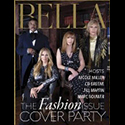 Bella Magazine, 2019
Bella Magazine, 2019
An Art Aficionado’s Haven: Fotografiska New York Debuts In The Flatiron District by Rose Aljure
Now set to open in the Flatiron District, Fotografiska New York, announced today its expanded inaugural season. The exhibition space will open on October 18th, 2019 with solo presentations of photography by Ellen von Unwerth, Tawny Chatmon. full article
 Gotham ToGo, September 2019 Issue
Gotham ToGo, September 2019 Issue
Fotografiska New York Opening Exhibitions by Fotografiska New York, Photography
…organized in collaboration with Galerie Myrtis, will include works from the series The Awakening, Byzantine Contempo, and from the recently completed series called The Redemption. Tawny Chatmon will be on view from October 18 to November 17, 2019… full article
 FORBES August 2019
FORBES August 2019
From Ellen Von Unwerth’s Bathing Supermodels To Lars Tunbjörk’s Everyday Absurdity, Fotografiska Sets Its Gaze On New York by Natasha Gural, Contributor
The diverse inaugural exhibition will include: Tawny Chatmon, a self-taught artist who combines paint, digital collage, illustration, and gold leaf… full article
 Omenka Online, July 2019
Omenka Online, July 2019
Tawny Chatmon on Rcclaiming Black Identity by Oliver Enwonwu & Oyindamola Olaniyan
In this ninth part of our continuing series on artists in the diaspora who promote Black identity and pride through their work, we present African American artist Tawny Chatmon. full article
 New York City Guide August 2019
New York City Guide August 2019
Fotografiska New York Set for Fall Opening in Flatiron with Unwerth, Chatmon by Merrill Lee Girardeau
The inaugural exhibition schedule at Fotografiska New York will feature the photographers Ellen von Unwerth, Tawny Chatmon, Helene Schmitz, and Adi Nes. full article
 Professional Photographer Magazine, April 2019 Issue
Professional Photographer Magazine, April 2019 Issue
TAWNY CHATMON FINDS FULFILLMENT IN DRIVING CULTURAL CHANGE by Robert Kiener
“My heart wasn’t in it anymore.” That’s how Tawny Chatmon remembers feeling about her commercial photography career after her father died. Sitting in her spacious studio, the basement of her Upper Marlboro, Maryland, home, she chokes back a tear as she remembers the self-selected assignment that changed her life.. full article
 Exhibitions
Exhibitions
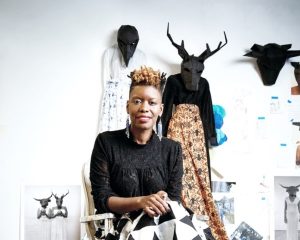 My work evaluates place, tradition, storytelling, and subject matter to develop imaginative dialogues and alternative strategies for self-imaging. Through installations, paintings, performance, video, and monumental sculptural figures, I am fabricating environments of ritual and memorial, depicting amalgamated images of new gods and mythical figures whose lives have been impacted by systemic inequalities. By developing counter and re-imagined narratives that live within the duality of physical and spiritual worlds, I am exploring the historical and contemporary social concerns of hybrid cultures, through the gaze of the African-Ascendant female progenitor.
My work evaluates place, tradition, storytelling, and subject matter to develop imaginative dialogues and alternative strategies for self-imaging. Through installations, paintings, performance, video, and monumental sculptural figures, I am fabricating environments of ritual and memorial, depicting amalgamated images of new gods and mythical figures whose lives have been impacted by systemic inequalities. By developing counter and re-imagined narratives that live within the duality of physical and spiritual worlds, I am exploring the historical and contemporary social concerns of hybrid cultures, through the gaze of the African-Ascendant female progenitor.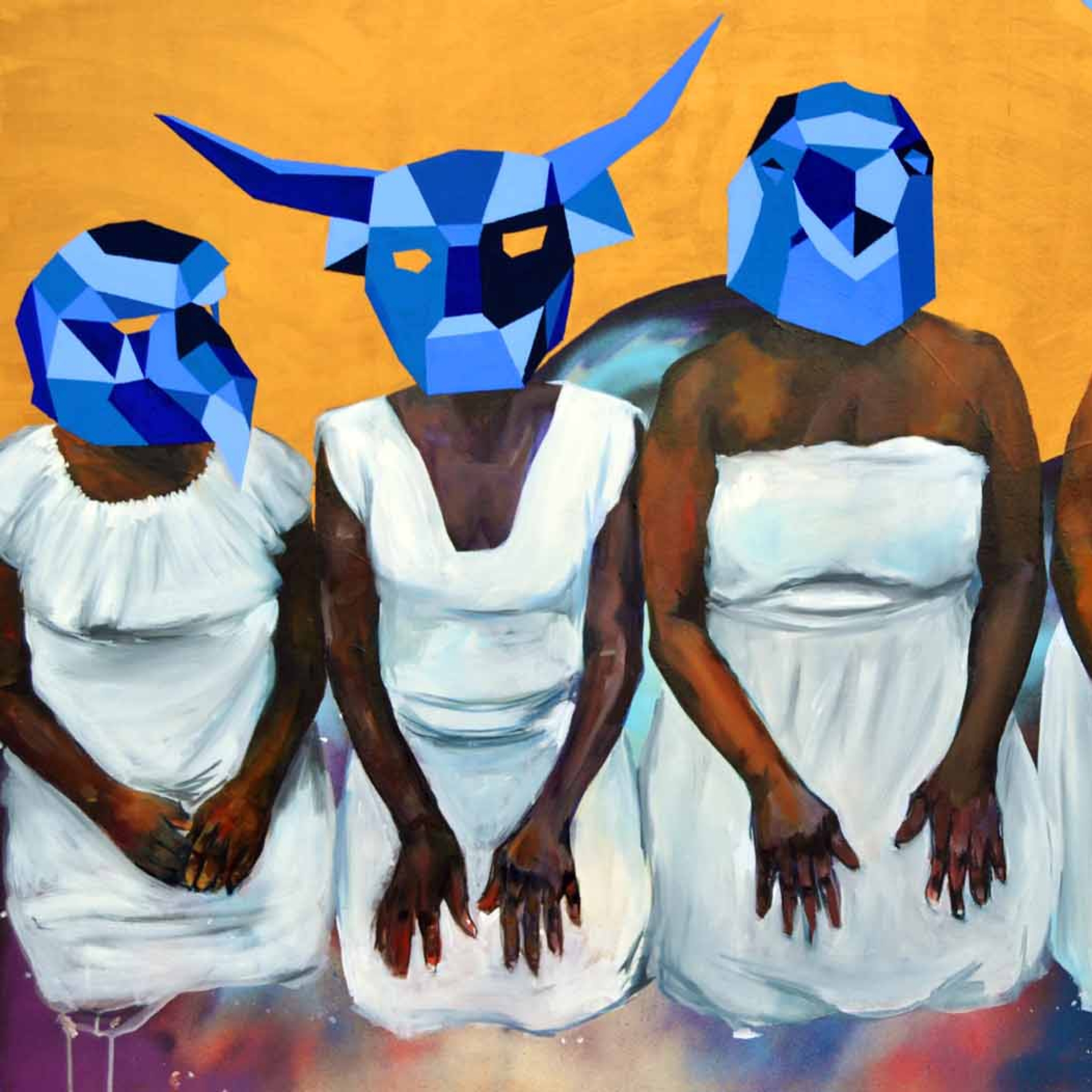
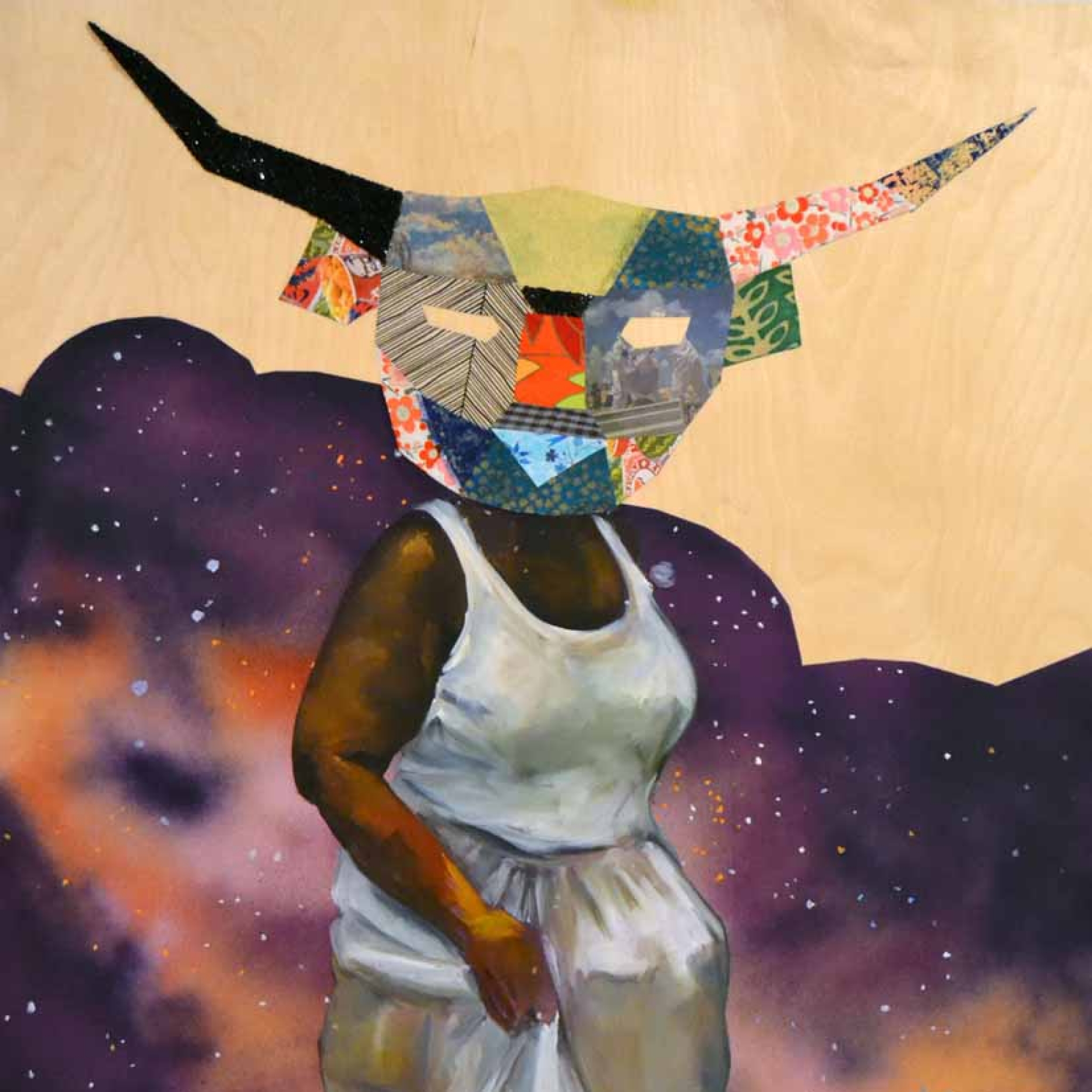
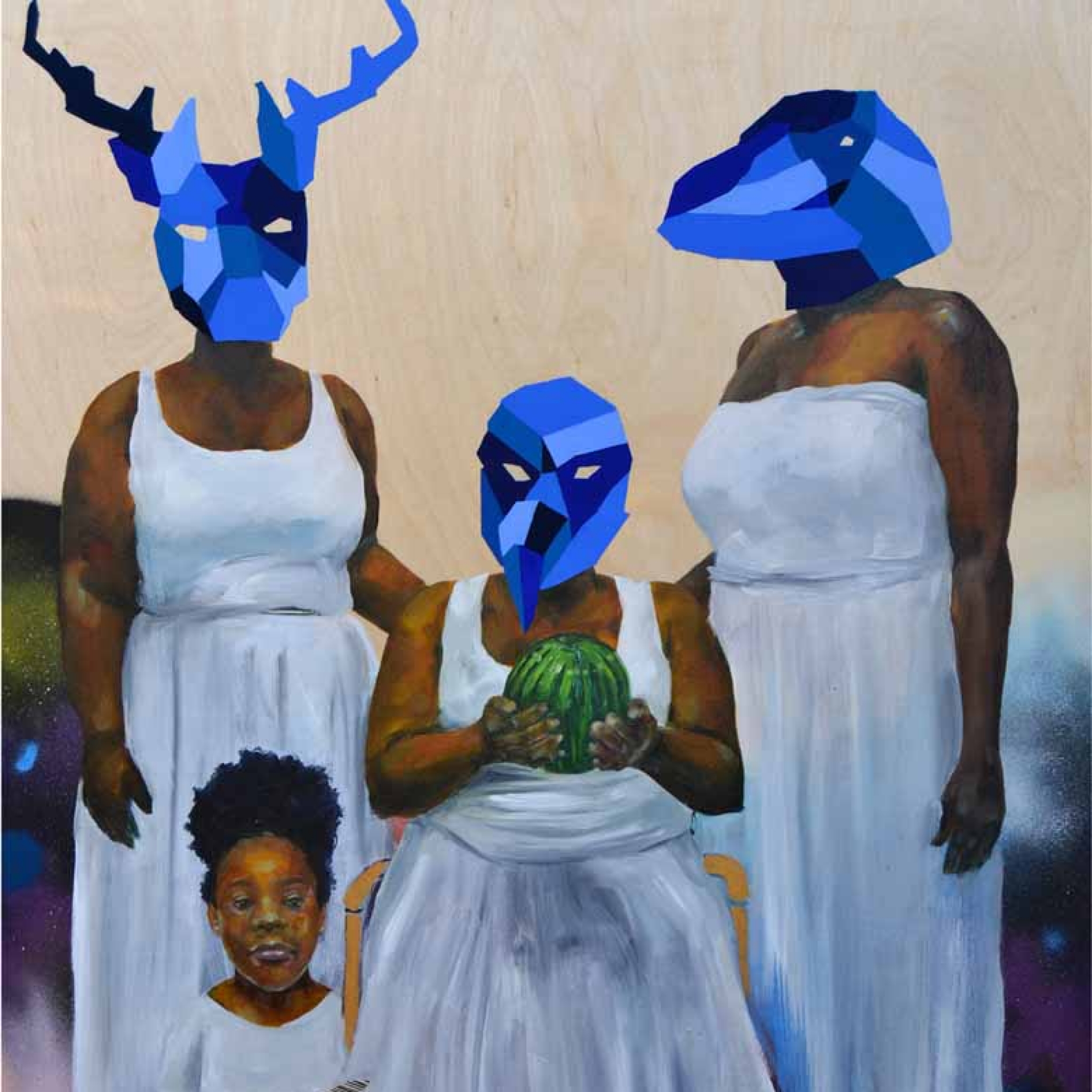
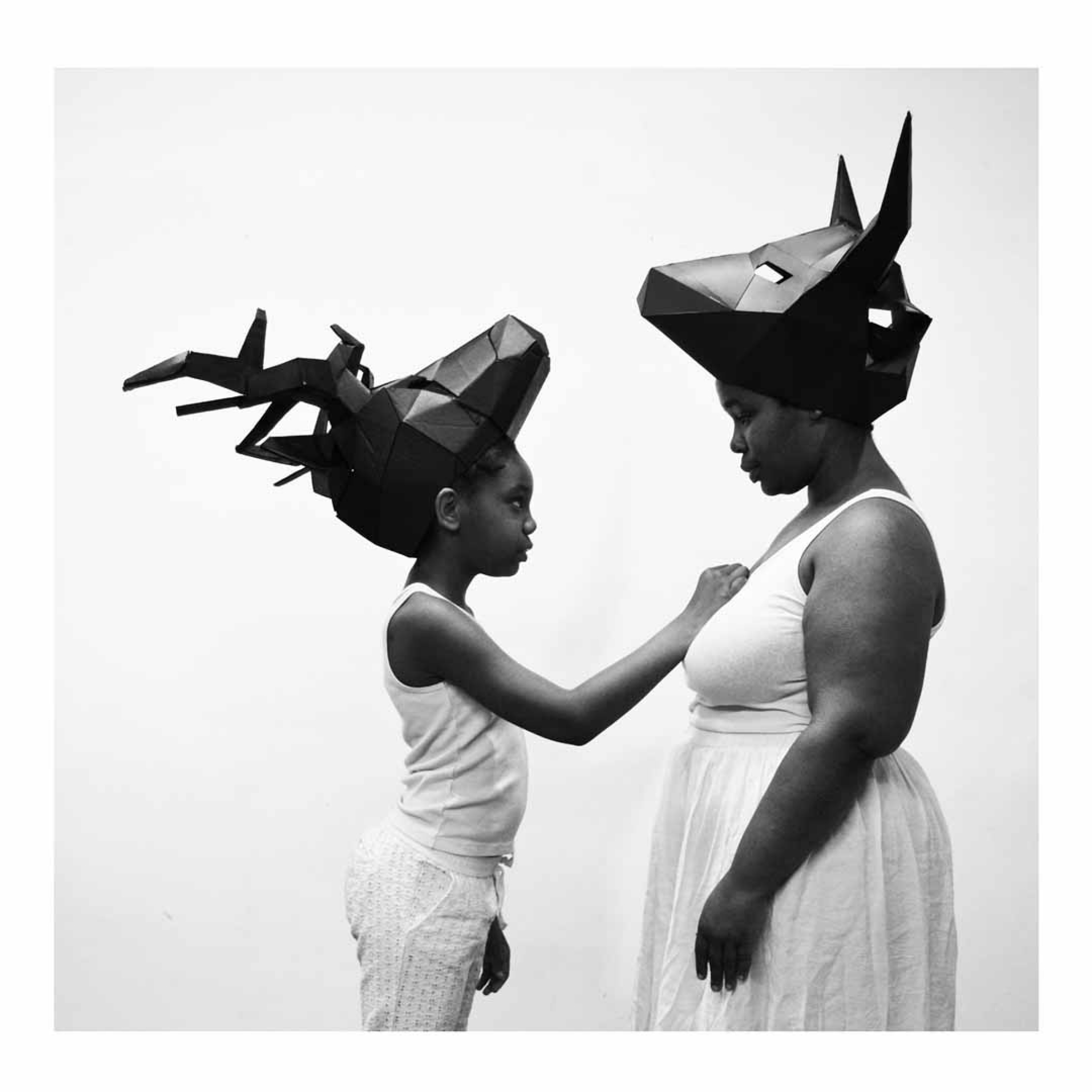
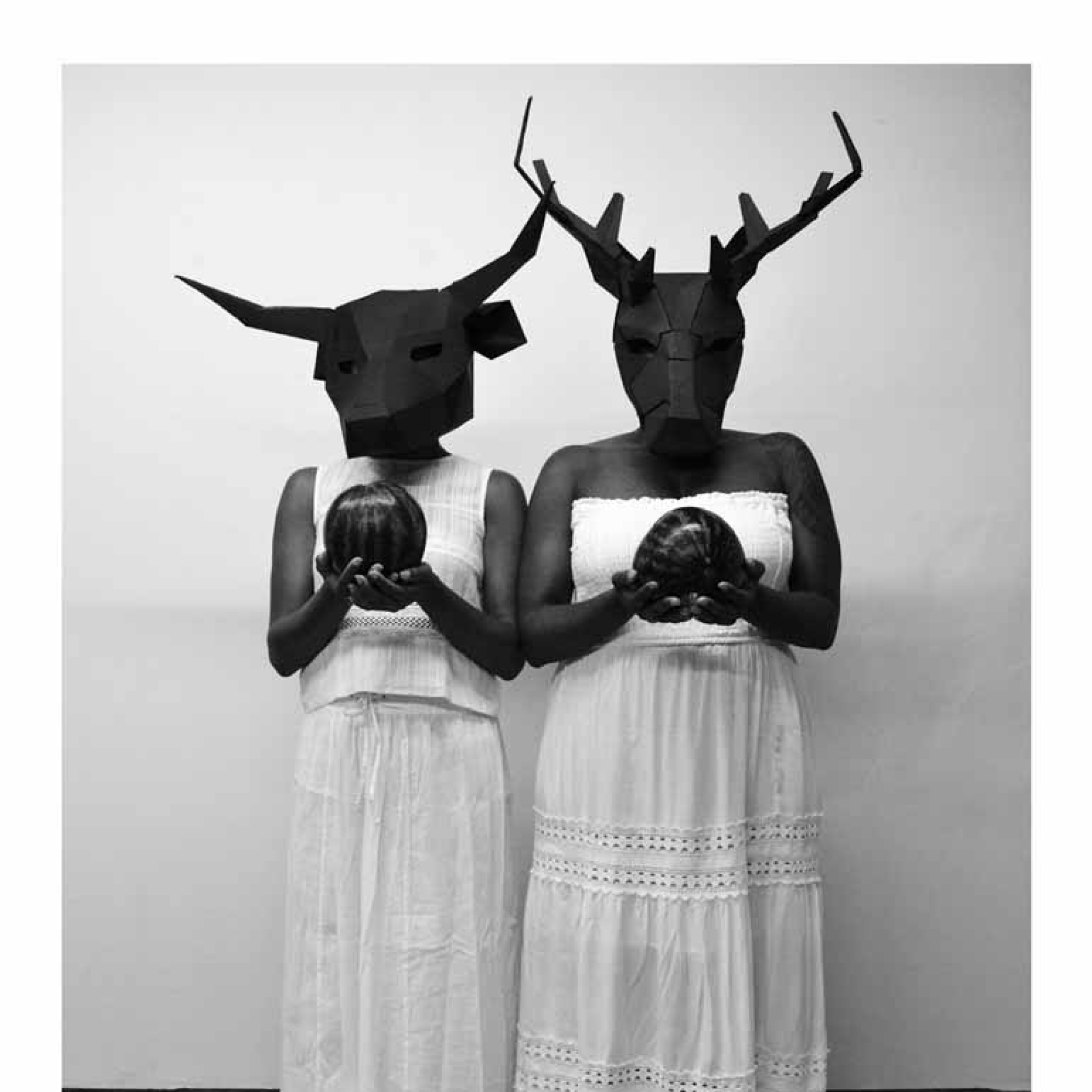
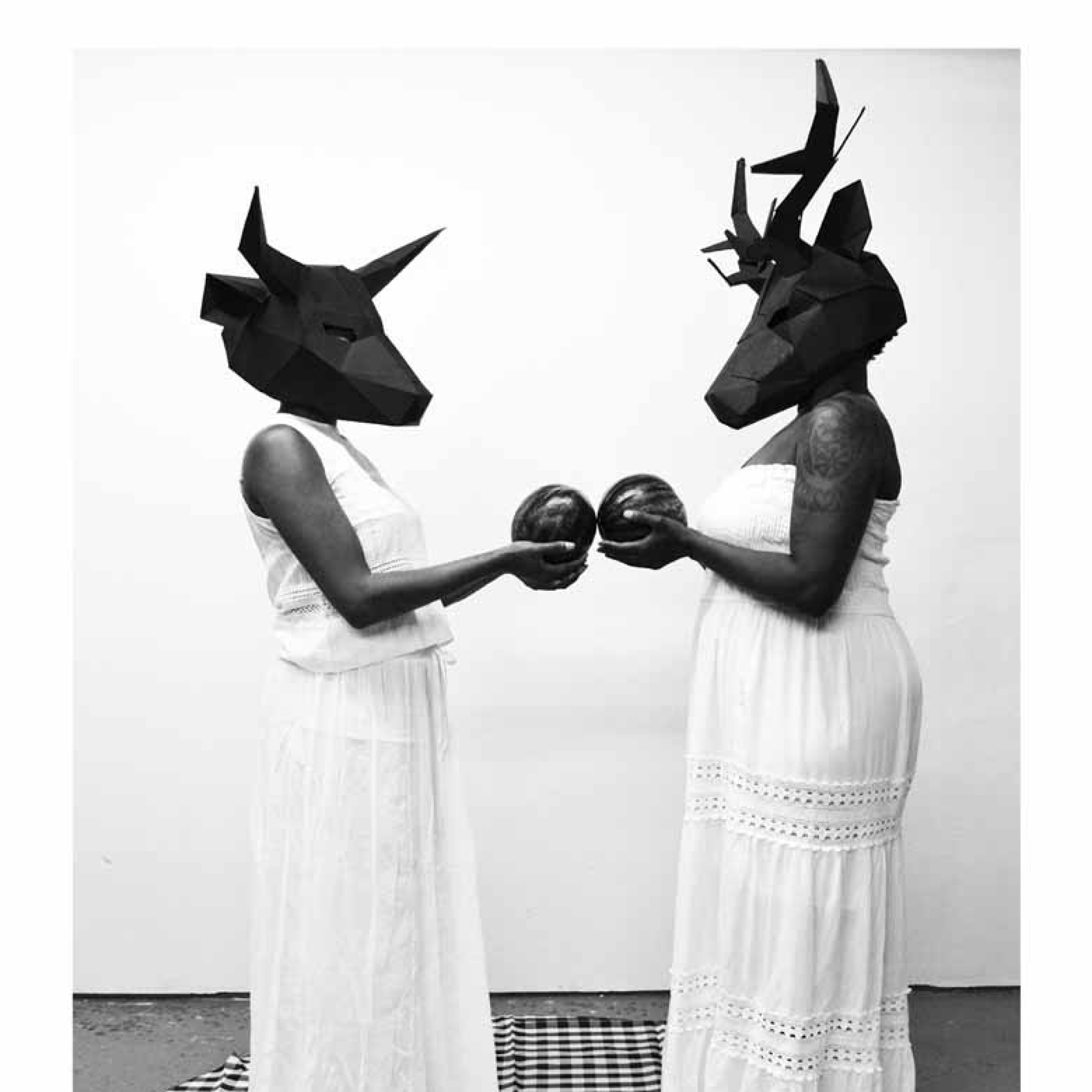
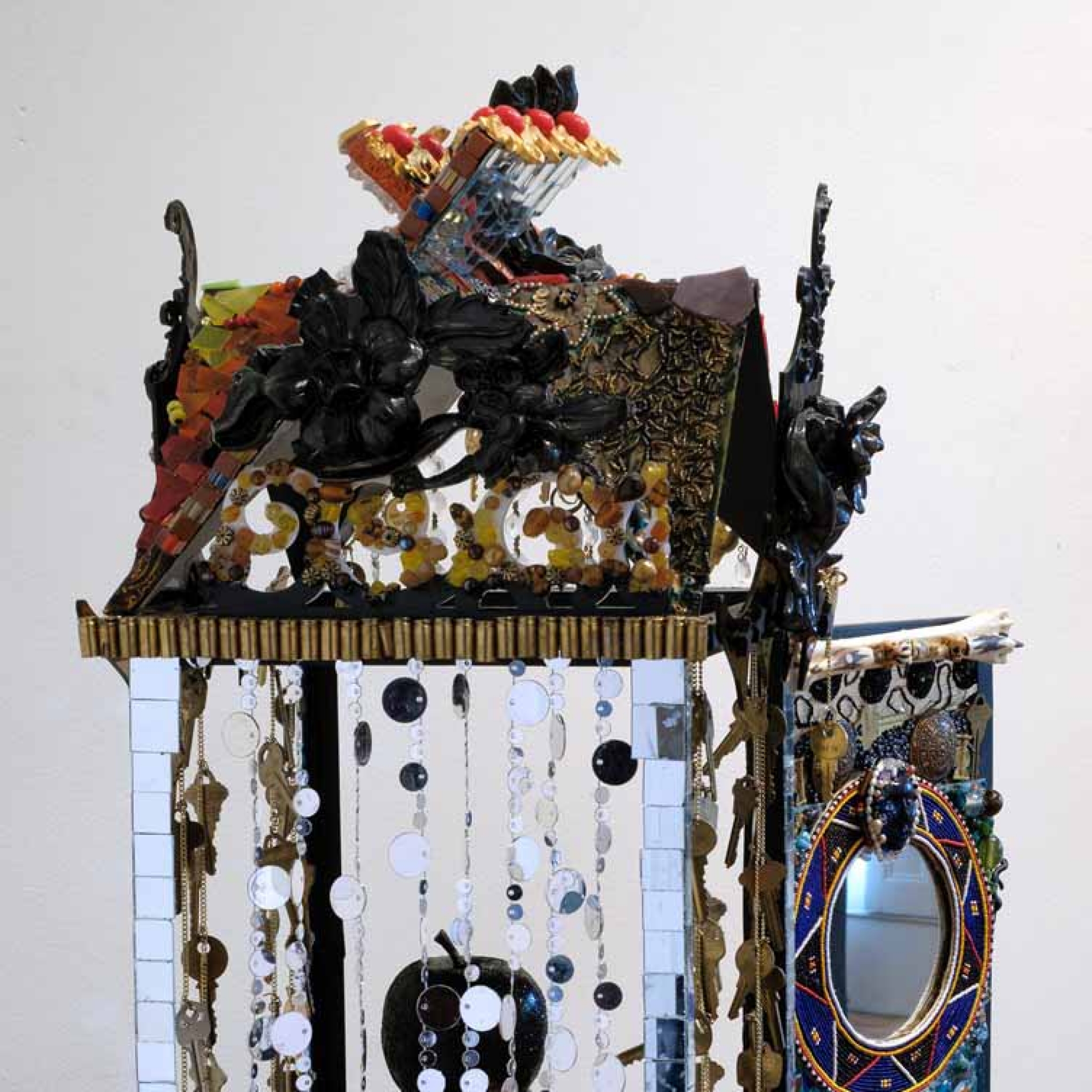
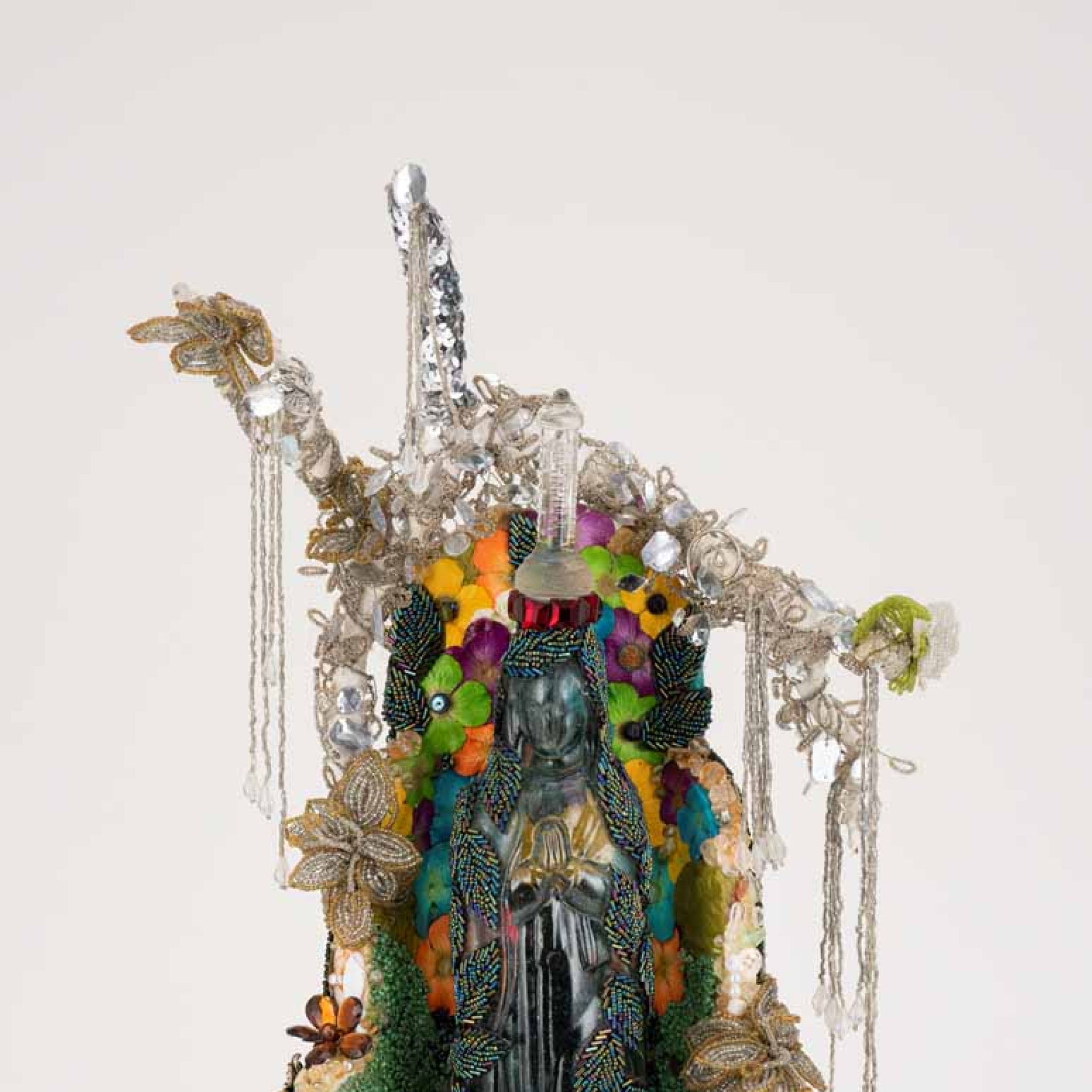
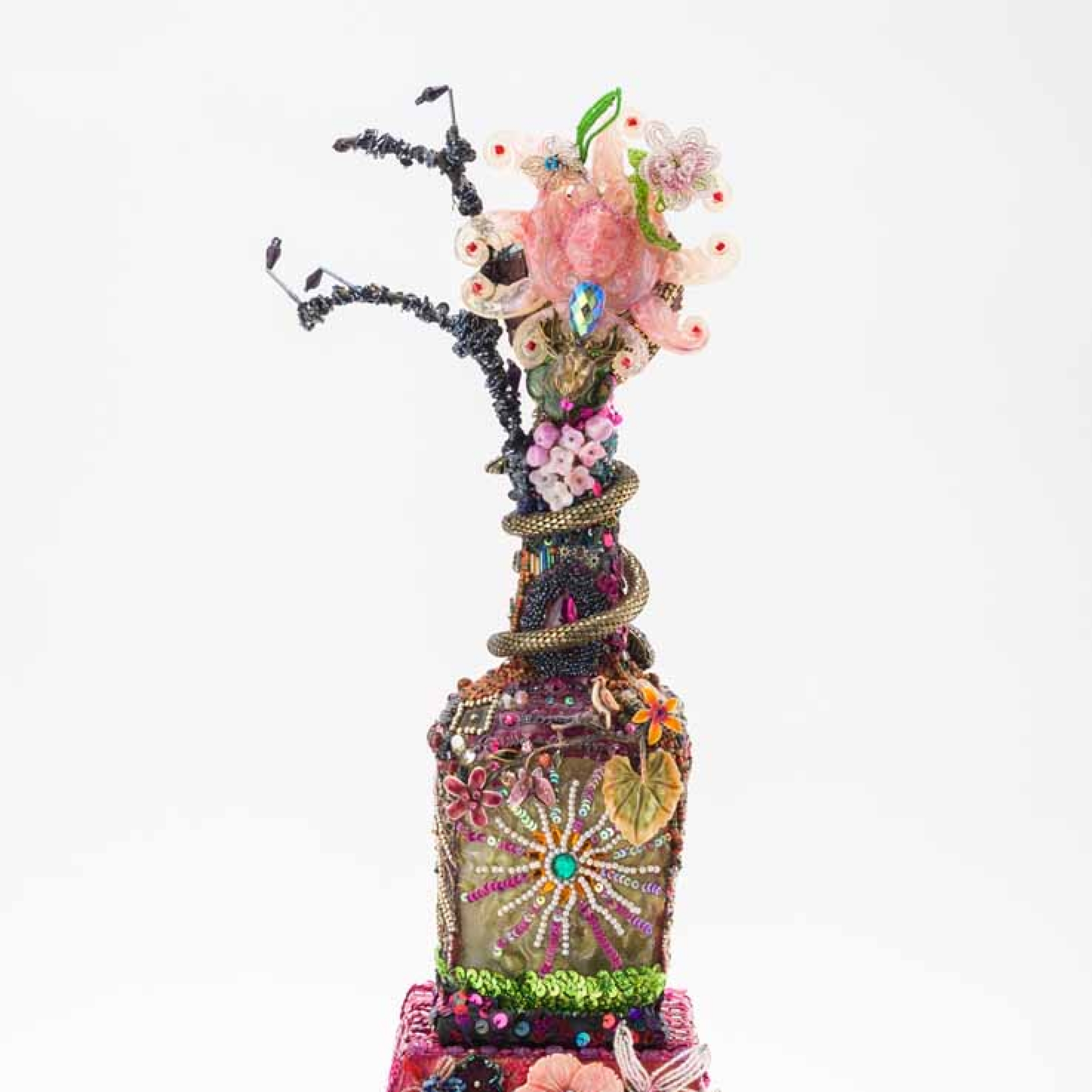
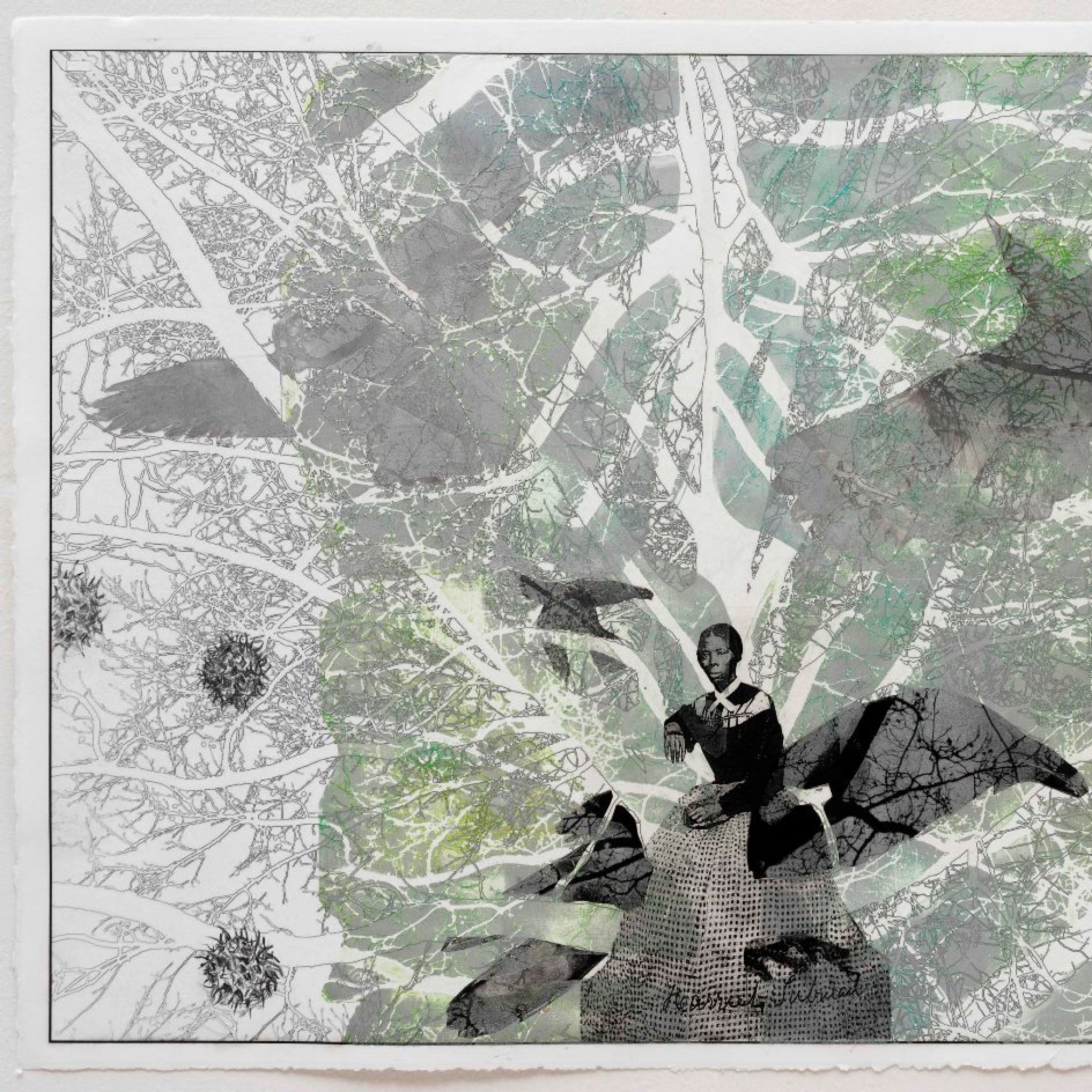
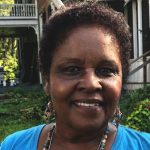 Biography |
Biography | 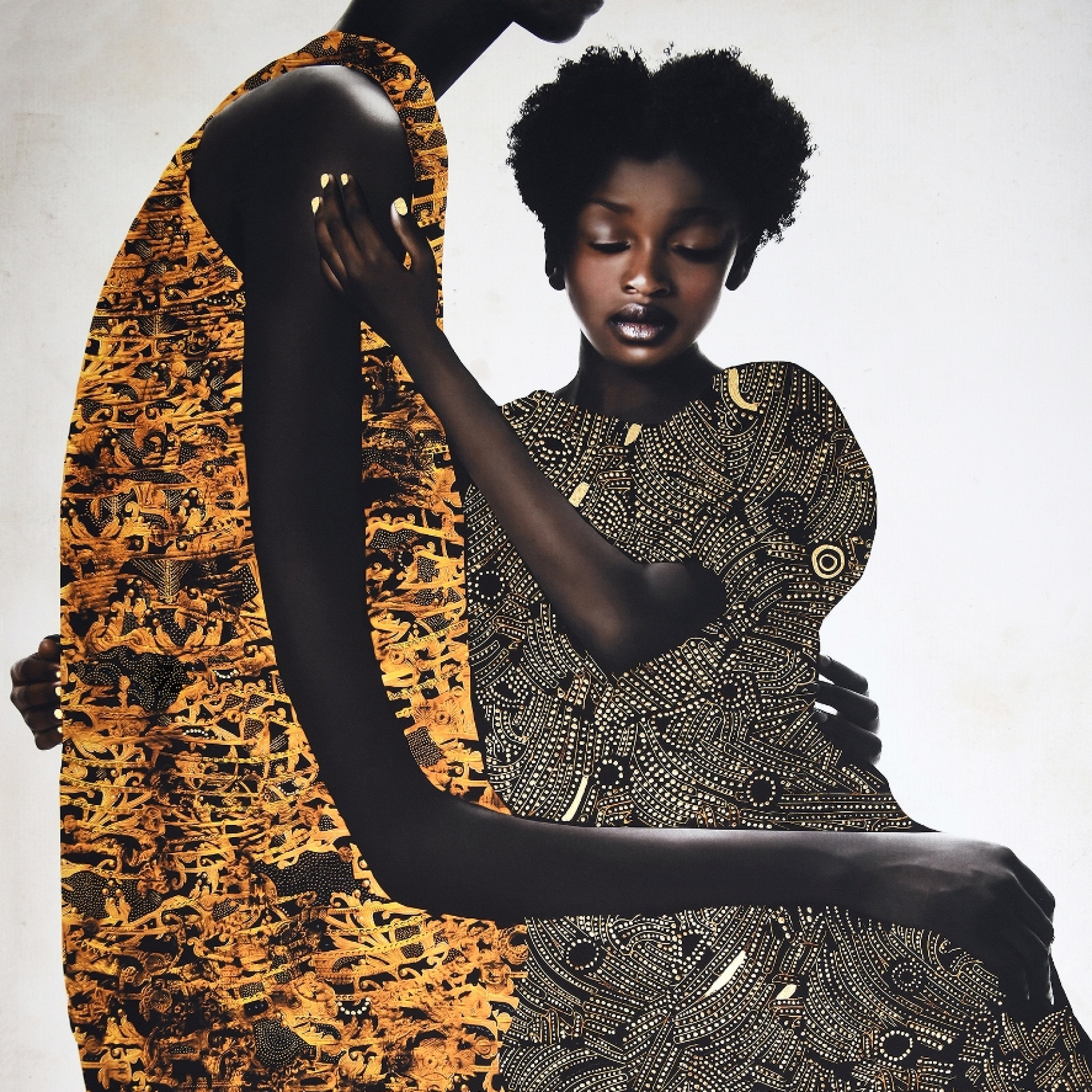
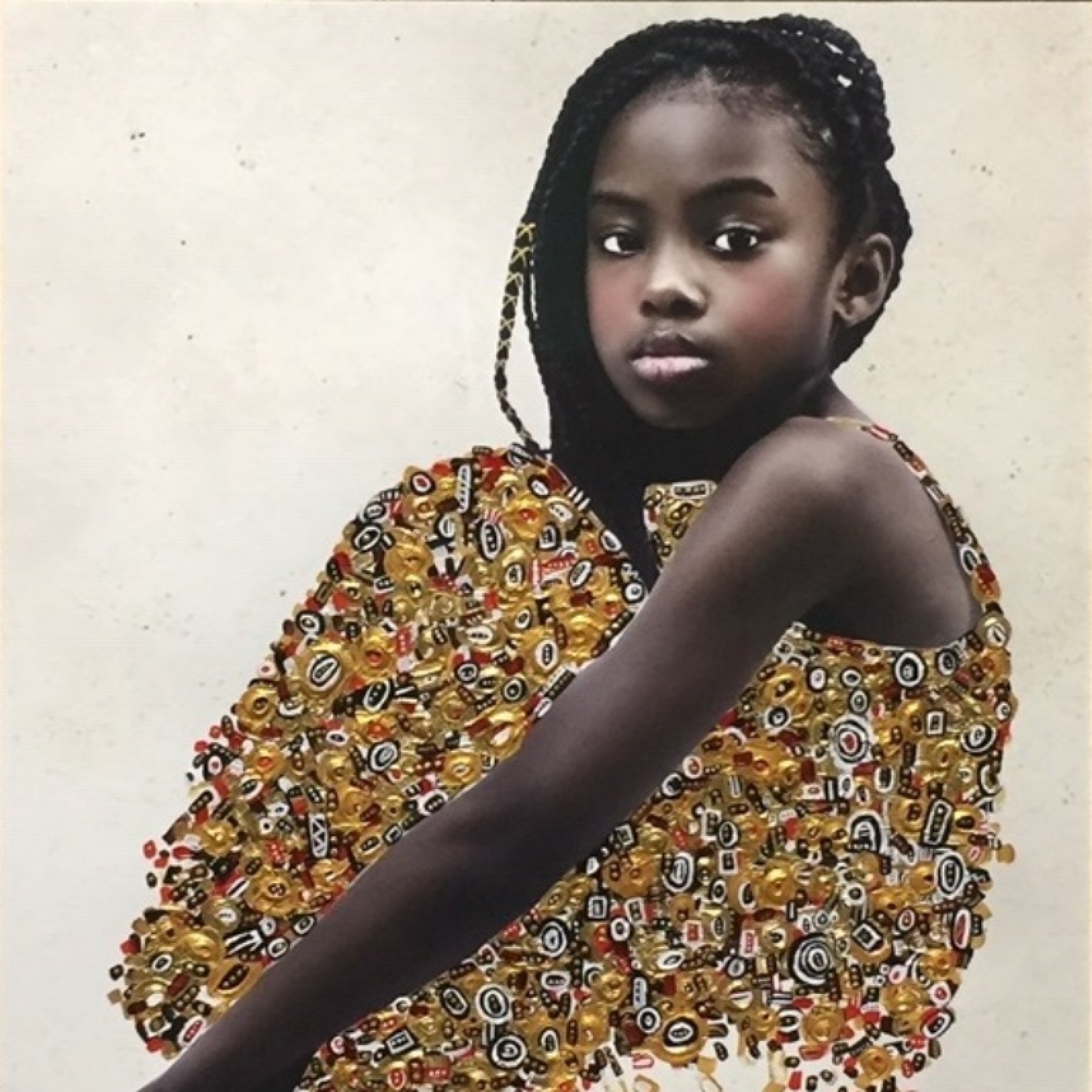
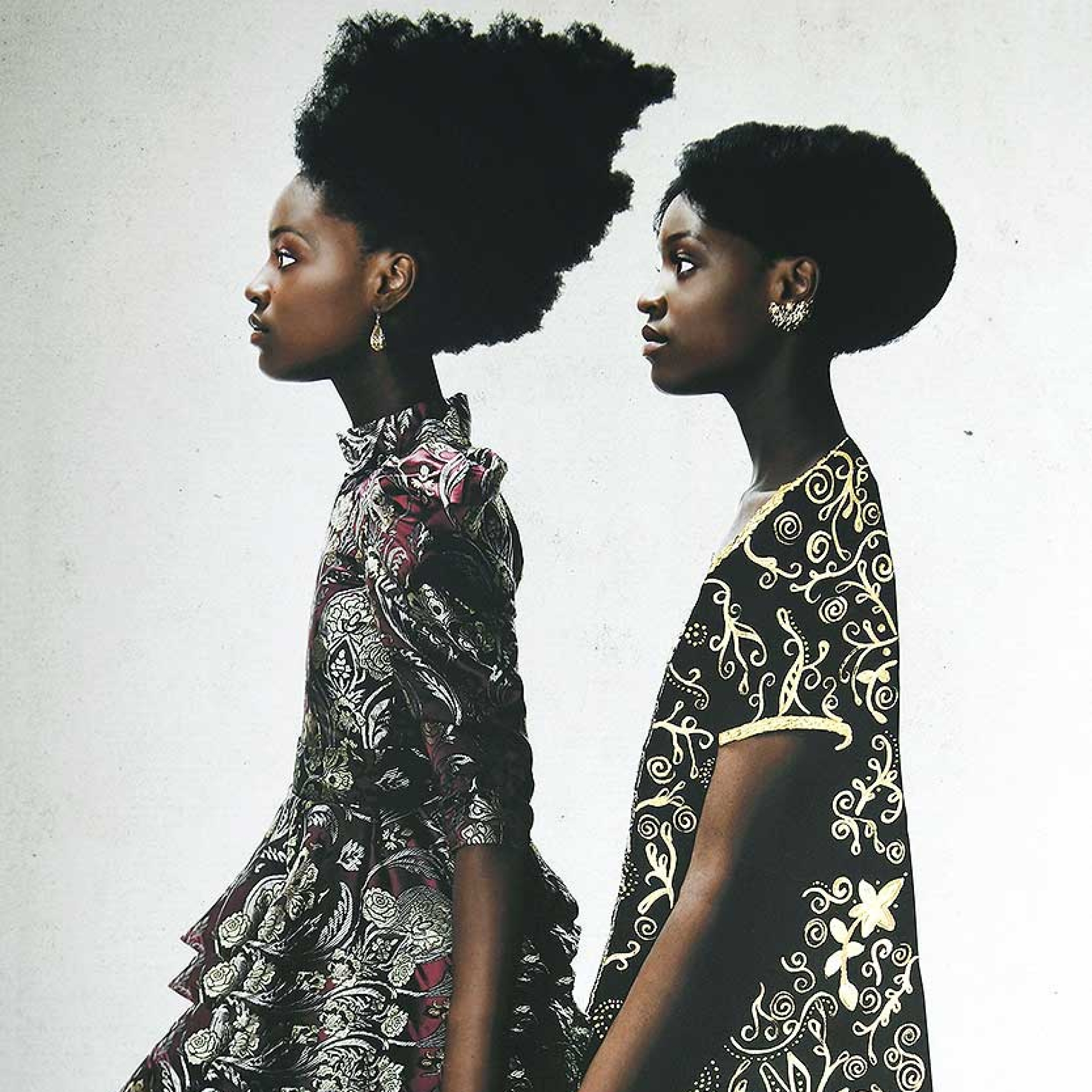
 It is my belief that our memories and experiences are directly responsible for who we become. What we are exposed to, what we read, the toys we play with as children, what we view… I attribute this thought to my deep-seated desire to make sure I’m sending a clear message (with my work) and that the message I am sending is “saying something” important; because if I believe we are shaped by our memories, as an artist, I must also believe that I too play a small part in shaping and shifting the views of anyone who comes in contact with my life’s work.
It is my belief that our memories and experiences are directly responsible for who we become. What we are exposed to, what we read, the toys we play with as children, what we view… I attribute this thought to my deep-seated desire to make sure I’m sending a clear message (with my work) and that the message I am sending is “saying something” important; because if I believe we are shaped by our memories, as an artist, I must also believe that I too play a small part in shaping and shifting the views of anyone who comes in contact with my life’s work.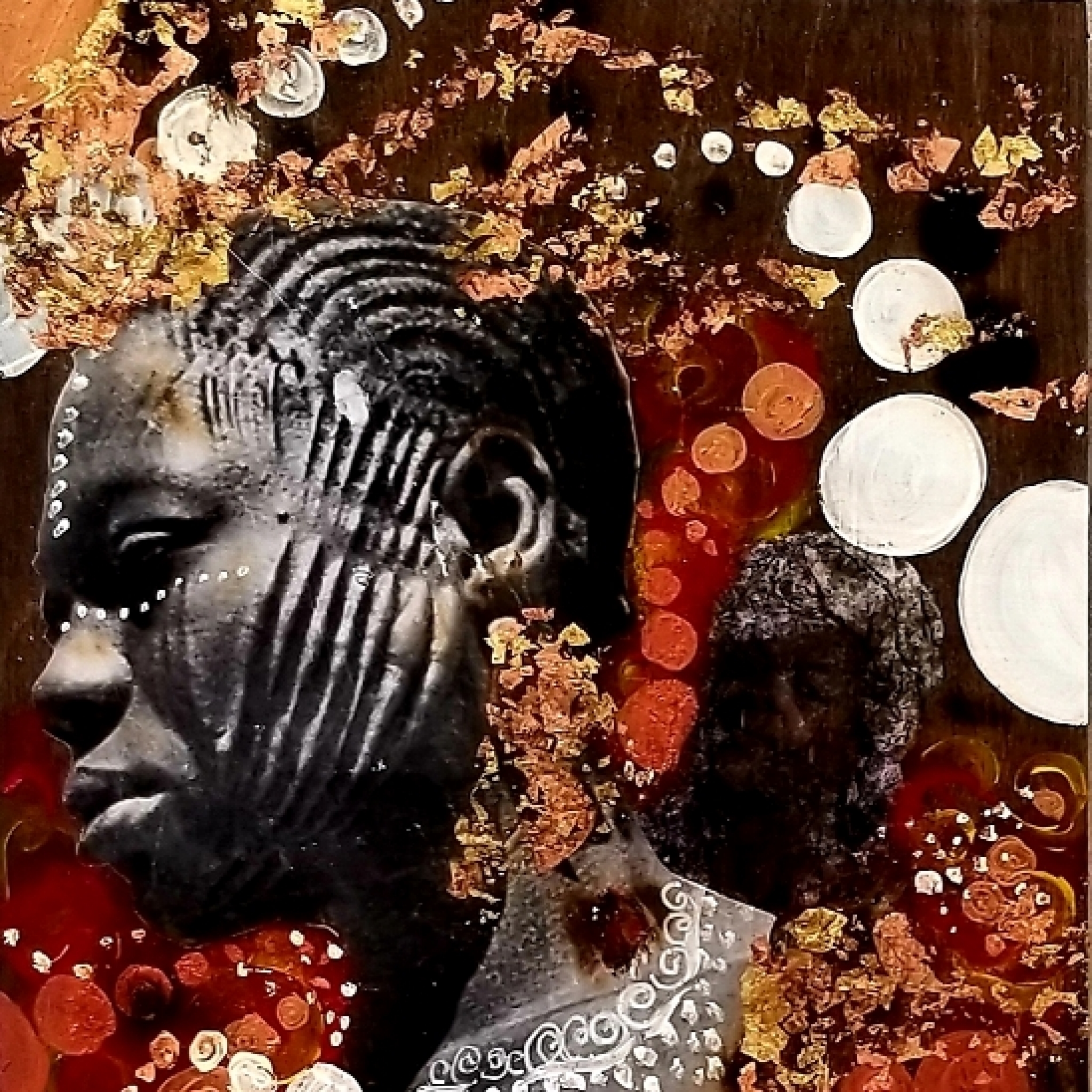
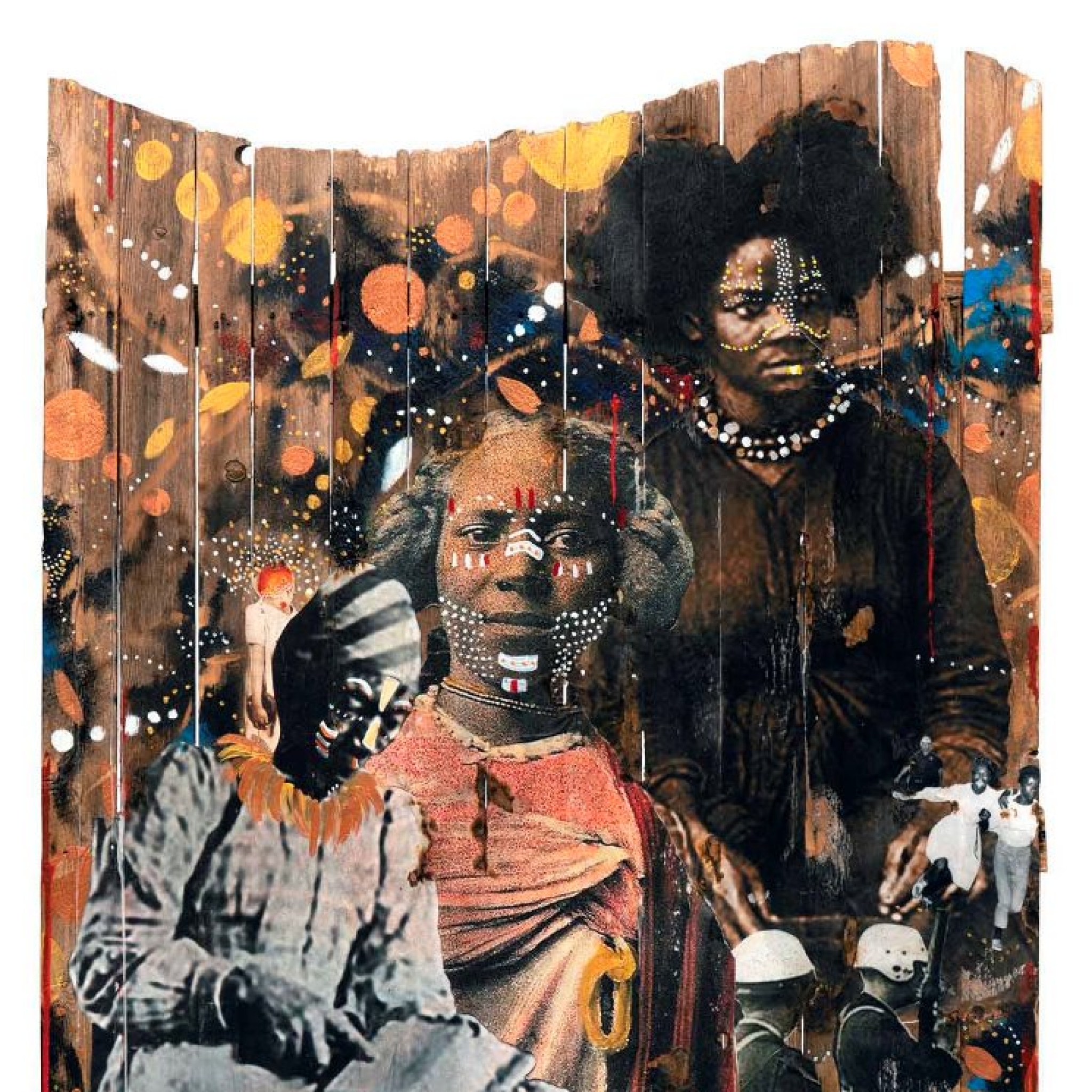
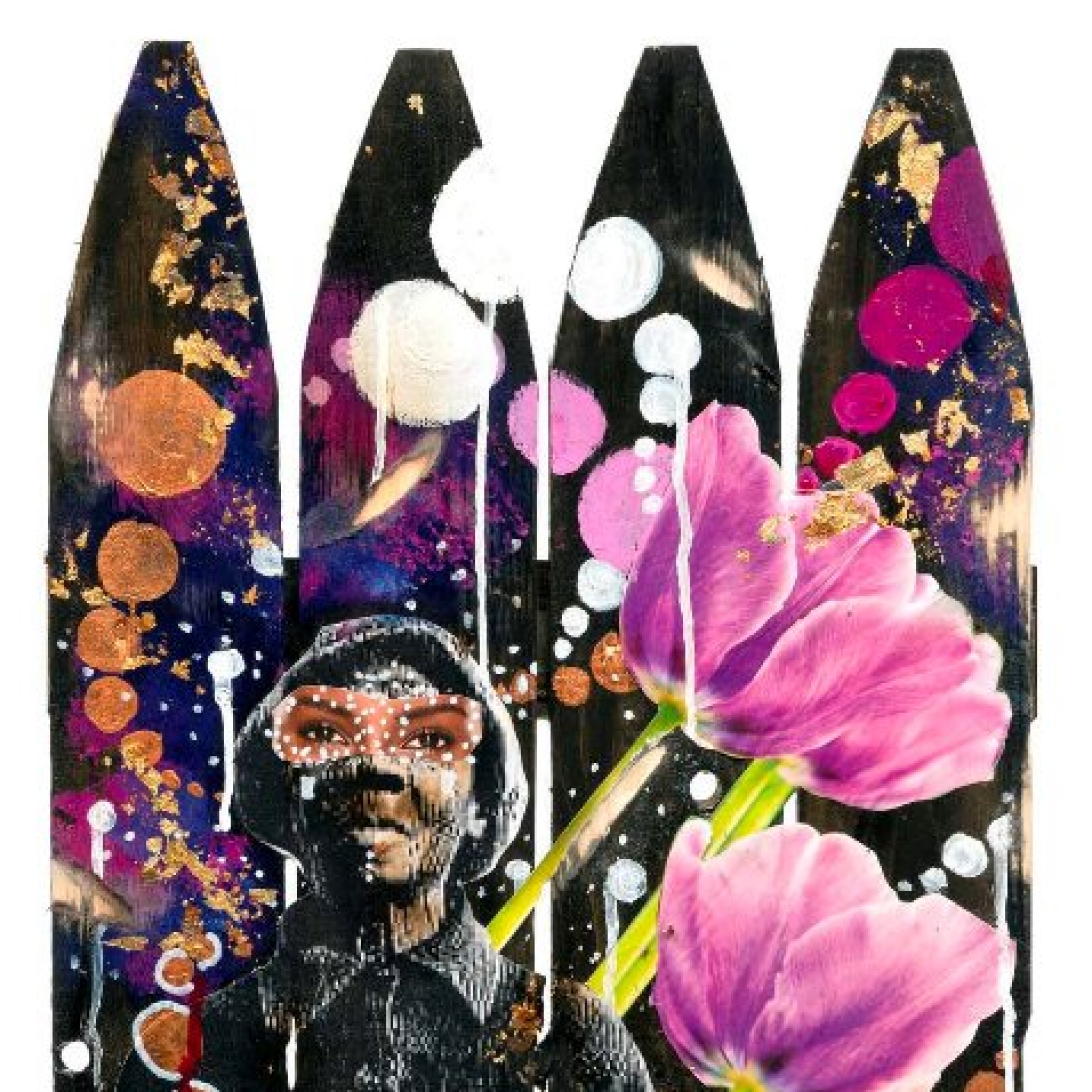

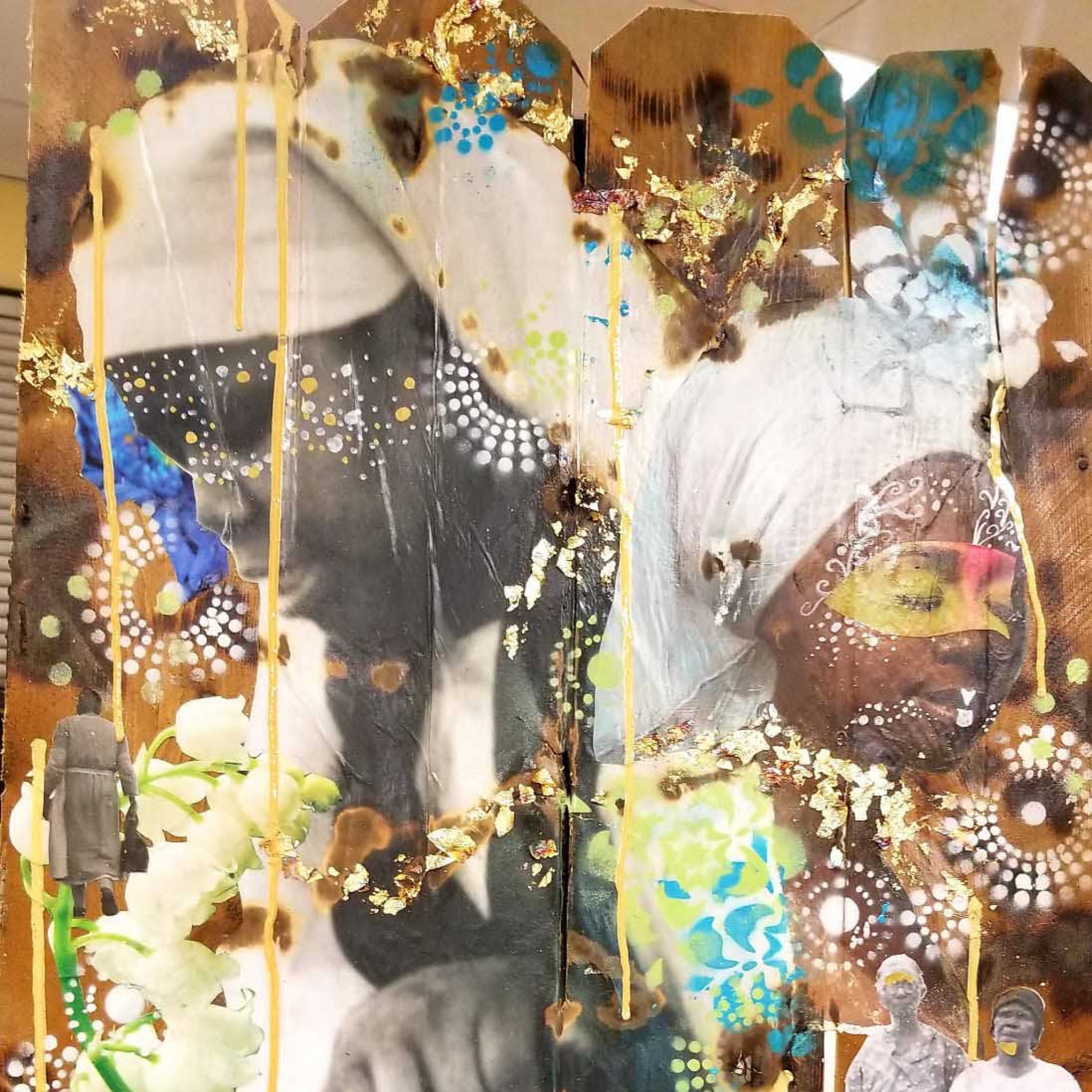
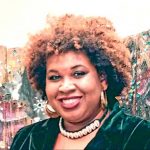
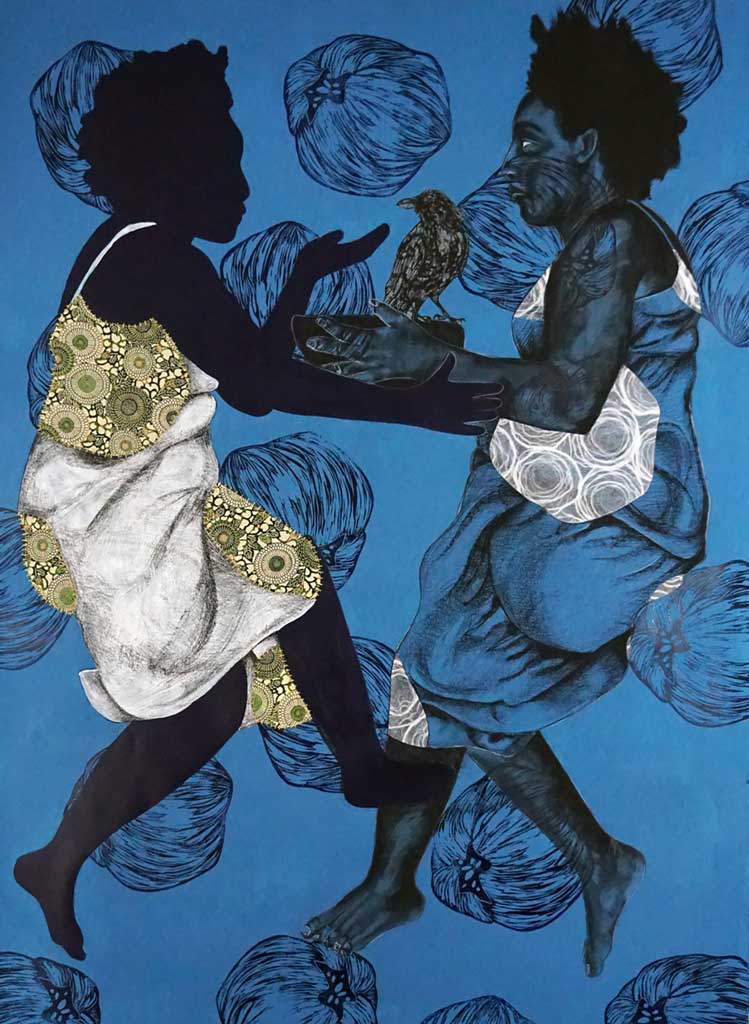
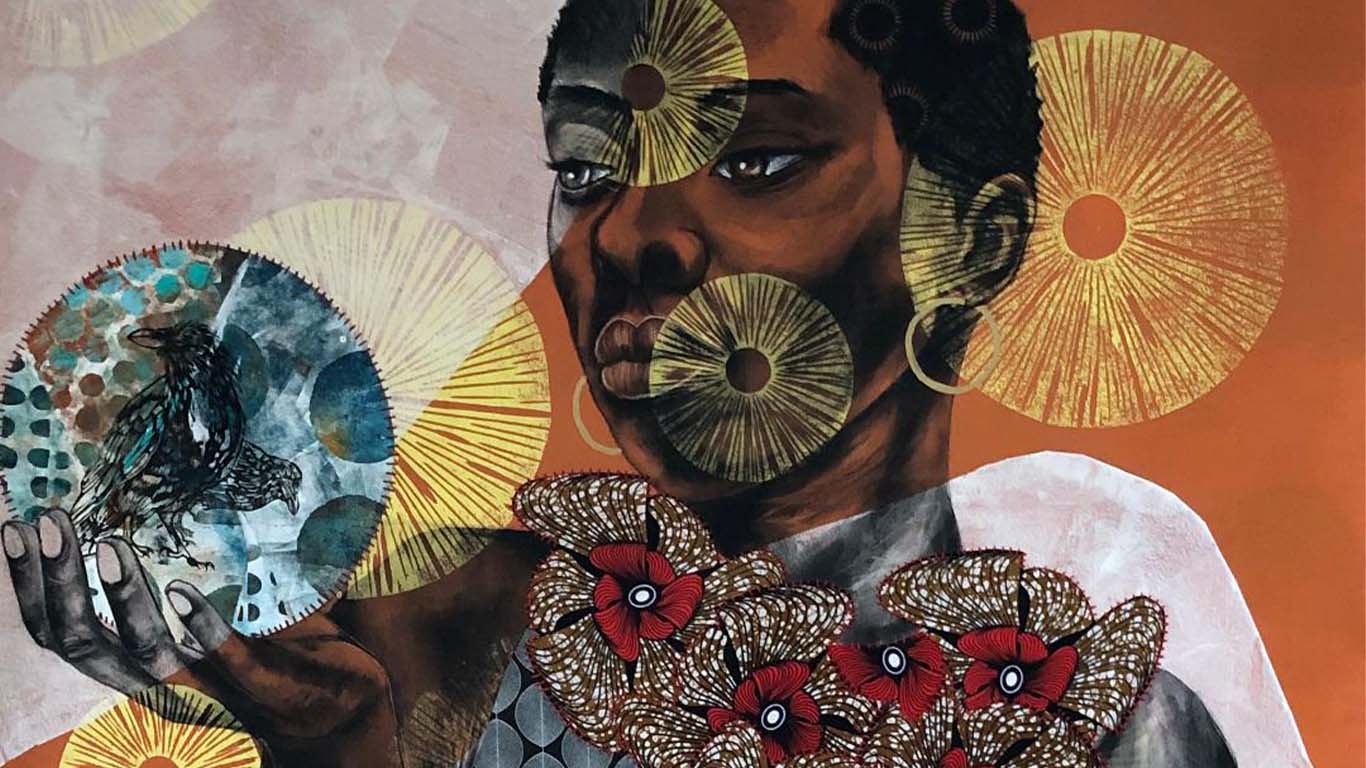
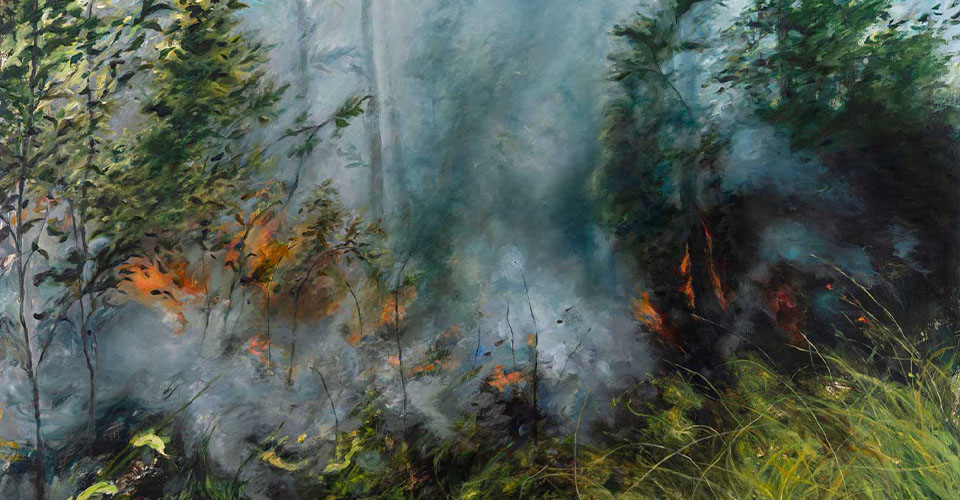
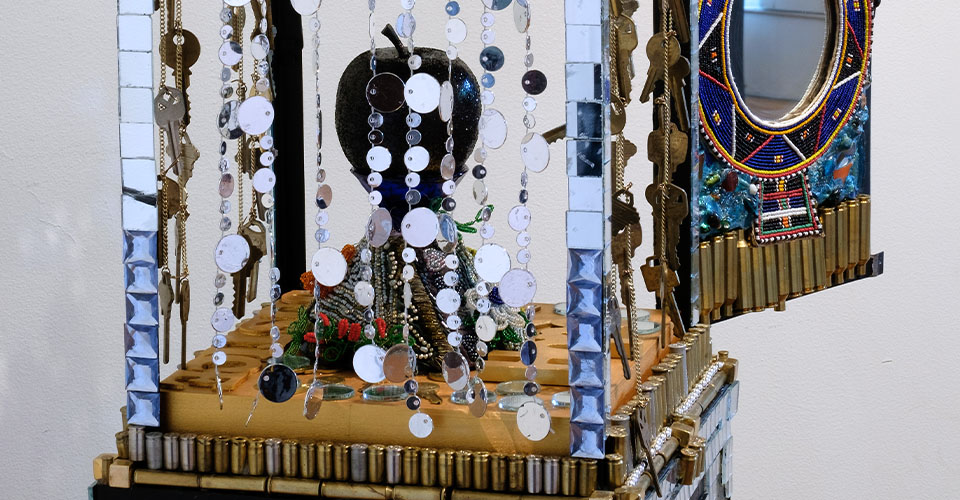
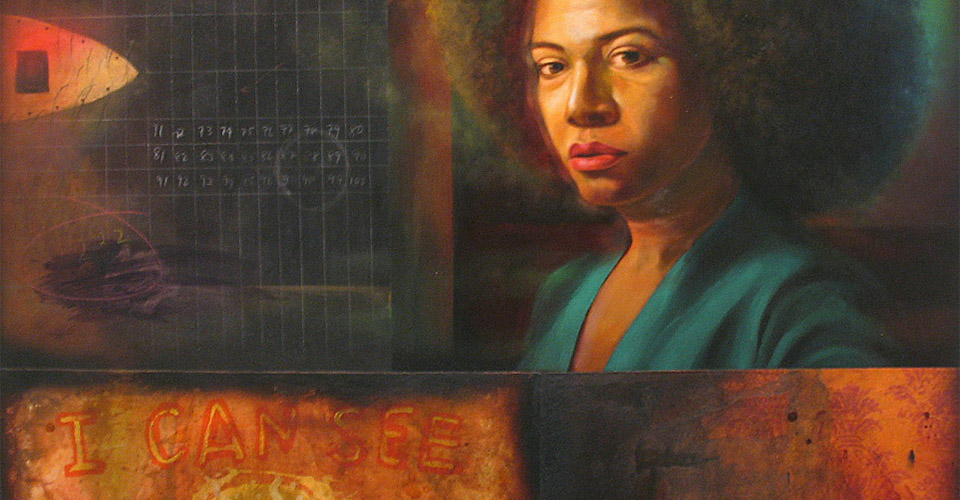
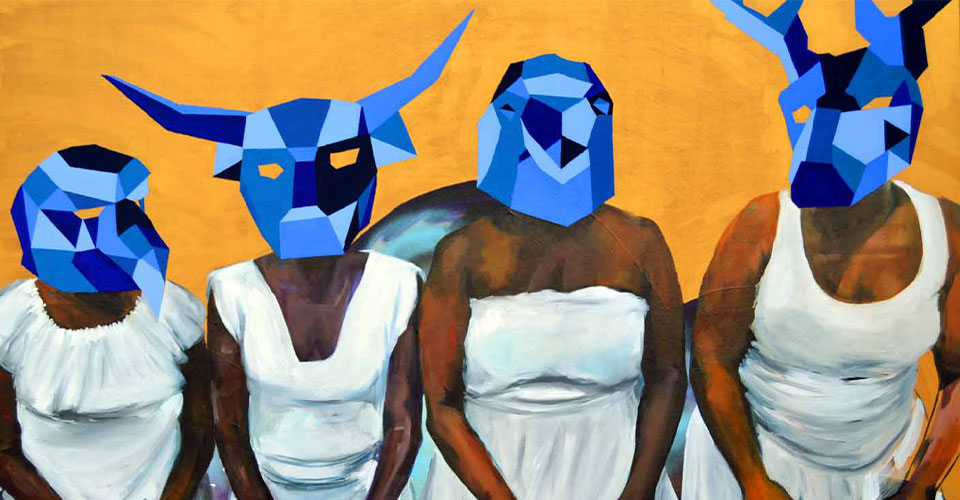
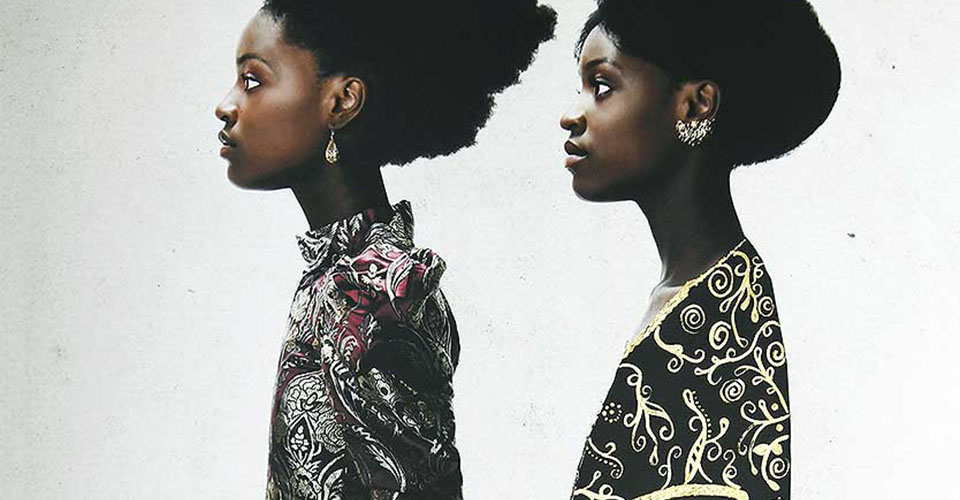
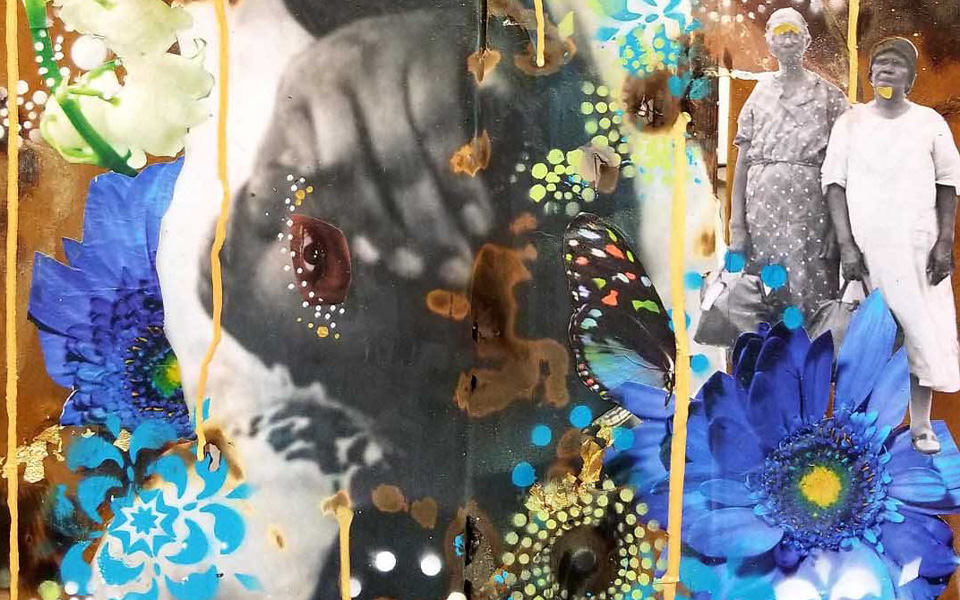
 Tawny Chatmon
Tawny Chatmon